In this guide, we’ll share our favourite Western Australia (WA) camping spots and tips for those venturing out on a camping trip in WA.
We’ll break down the camping gear we rely on to make our trips comfortable and practical, and guide you on the best times to camp in Western Australia.
Over the past eight years, we’ve explored the world through road trips and camping—from Africa’s rugged wilderness to Europe’s diverse landscapes. But no matter where our travels take us, we still call Western Australia home.

Western Australia, with its white-sand beaches and forests in the south and the red-sand outback and more incredible beaches in the north, offers endless opportunities for adventure.
It’s where our love for camping began, and it remains one of our favourite places to return to. Over the years, we’ve camped by various means, from simple ground tents to motorhoming around Europe and rooftop tents in Australia and Africa.
Don’t forget to grab our free printable Camping equipment checklist to help you plan your own WA adventure—whether you’re new to camping or seasoned travellers like us.
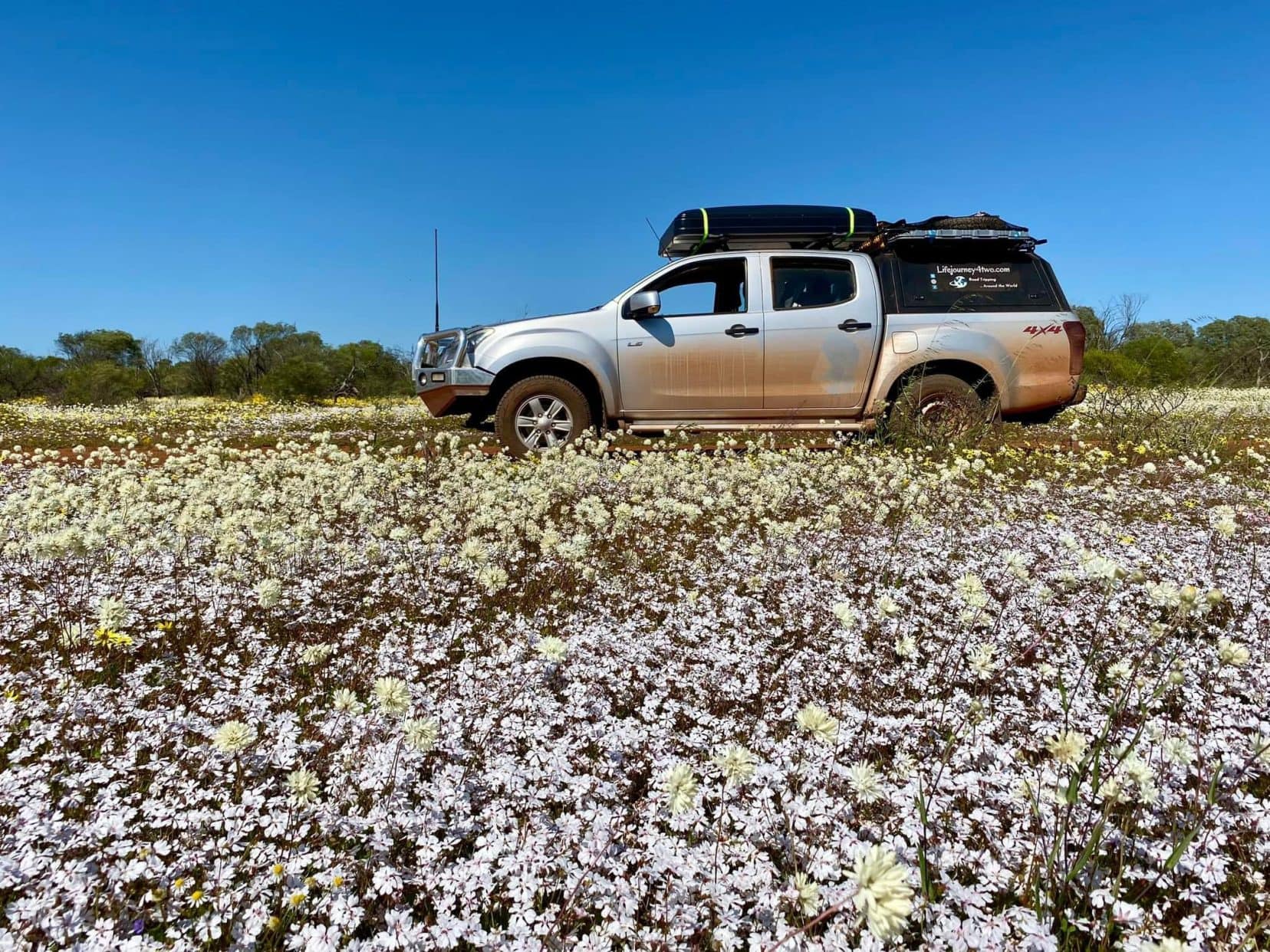
Top Camping in Western Australia Tips in a Nutshell
- Best Time to Camp:
- North WA: May to October (dry season)
- South WA: November to April (warmer months)
- Wildflower Season: July to September (north-to-south times vary)
- Top Spots:
- Beaches: Lucky Bay, Wharton Bay (Esperance), Conspicuous Cliffs, Green’s Pool (Denmark), Little Cove (Albany), Coral Bay (Coral Coast).
- Outback: Karijini National Park, Wave Rock, Elachbutting Rock
- Forests: Walpole, Pemberton, Warren National Park, Honeymoon Pool (Collie)
- Camping Tips:
- Use Wikicamps to find camping spots in WA
- Follow local regulations (e.g., no camping on most town beaches)
- Pack off-grid essentials like a solar blanket, safety gear, and a first-aid kit
- Always check access for 4WD-only areas
- Always have fly repellent and fly head nets with you!
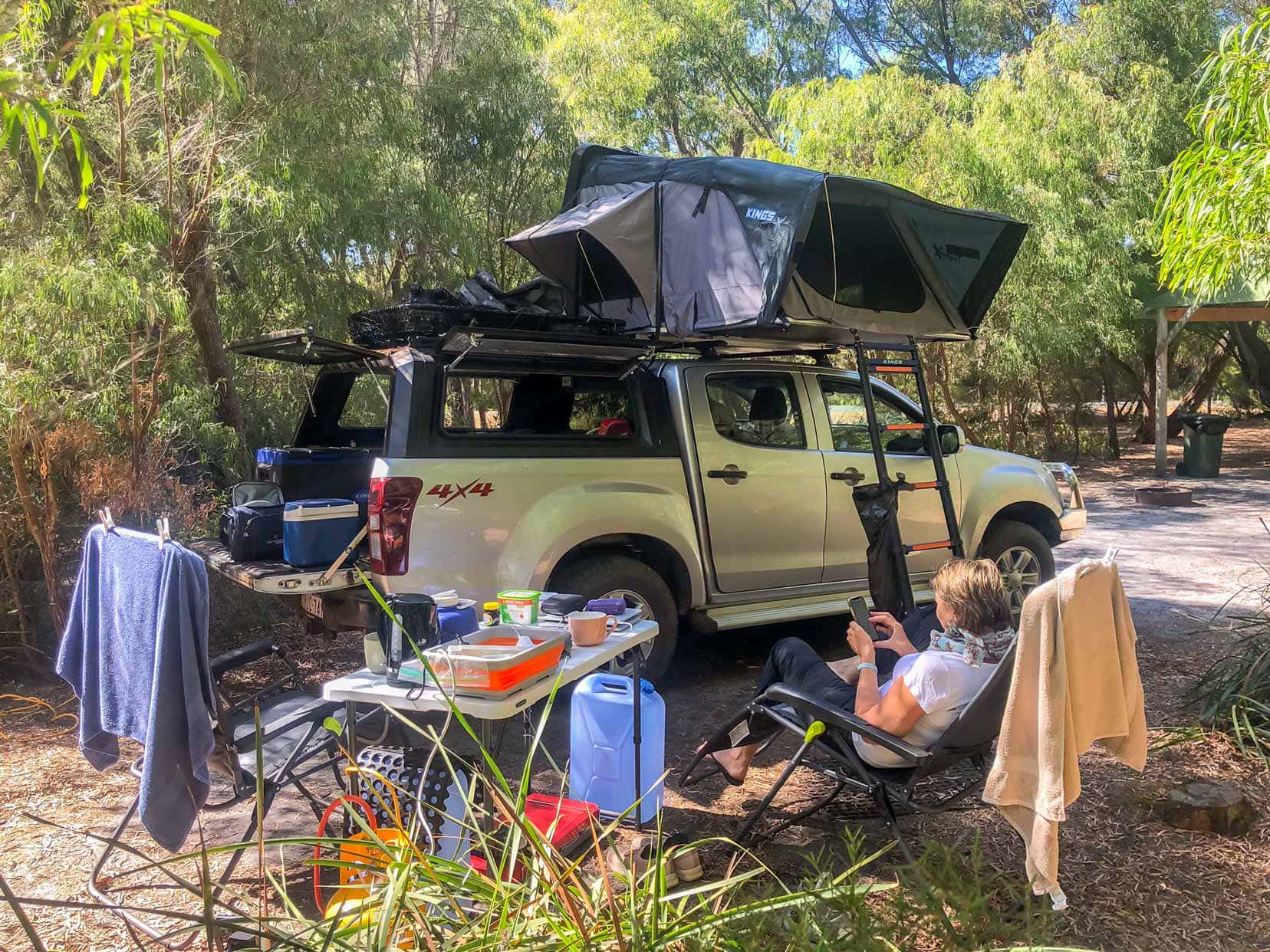
Browse this article or jump ahead:
Where to Camp in Western Australia
Western Australia offers a fantastic variety of camping experiences, whether looking for remote outback adventures, beachside relaxation, or exploring unique towns and landscapes.
Below, we’ve shared our favourite camping spots, including a few hidden gems we’ve discovered during our Western Australia camping adventures.
We’ve also included an interactive map for you here, with all the places we mention throughout this post for you to orient yourself.
Western Australia Map
1. Western Australia Coastal Escapes
Cape Le Grand National Park (Esperance)
Camping in Cape Le Grand near Esperance feels like something out of a dream, with powdery white beaches and crystal-clear waters.
Lucky Bay is especially famous for its kangaroos that hop along the shore, and Wharton Bay is a local’s secret and fantastic for 4×4 driving on the beach. Imagine waking up to kangaroos lounging in the sun right outside your tent!
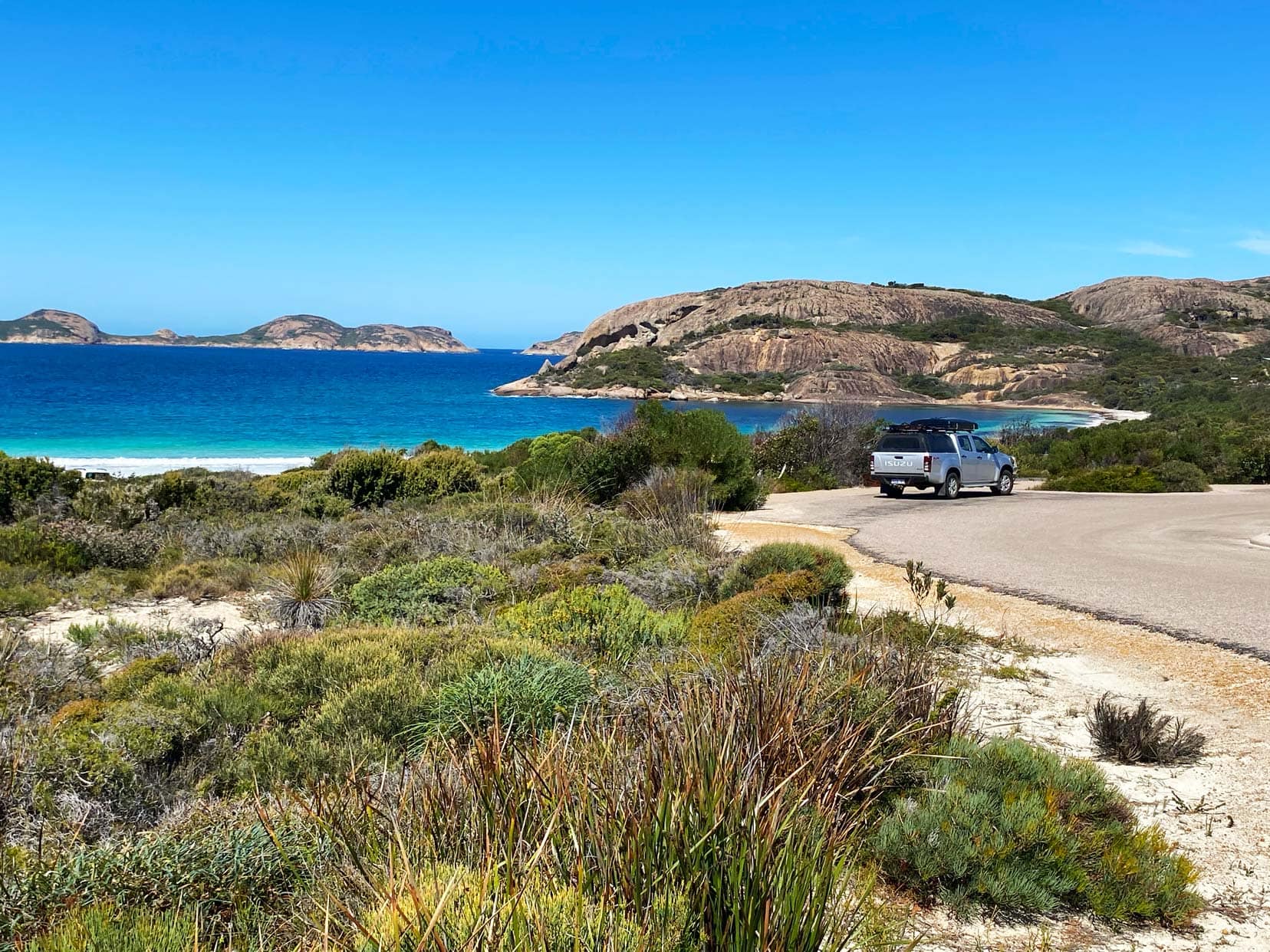
For those who enjoy hiking, a climb up Frenchman Peak offers stunning views of the surrounding National Park coastline.
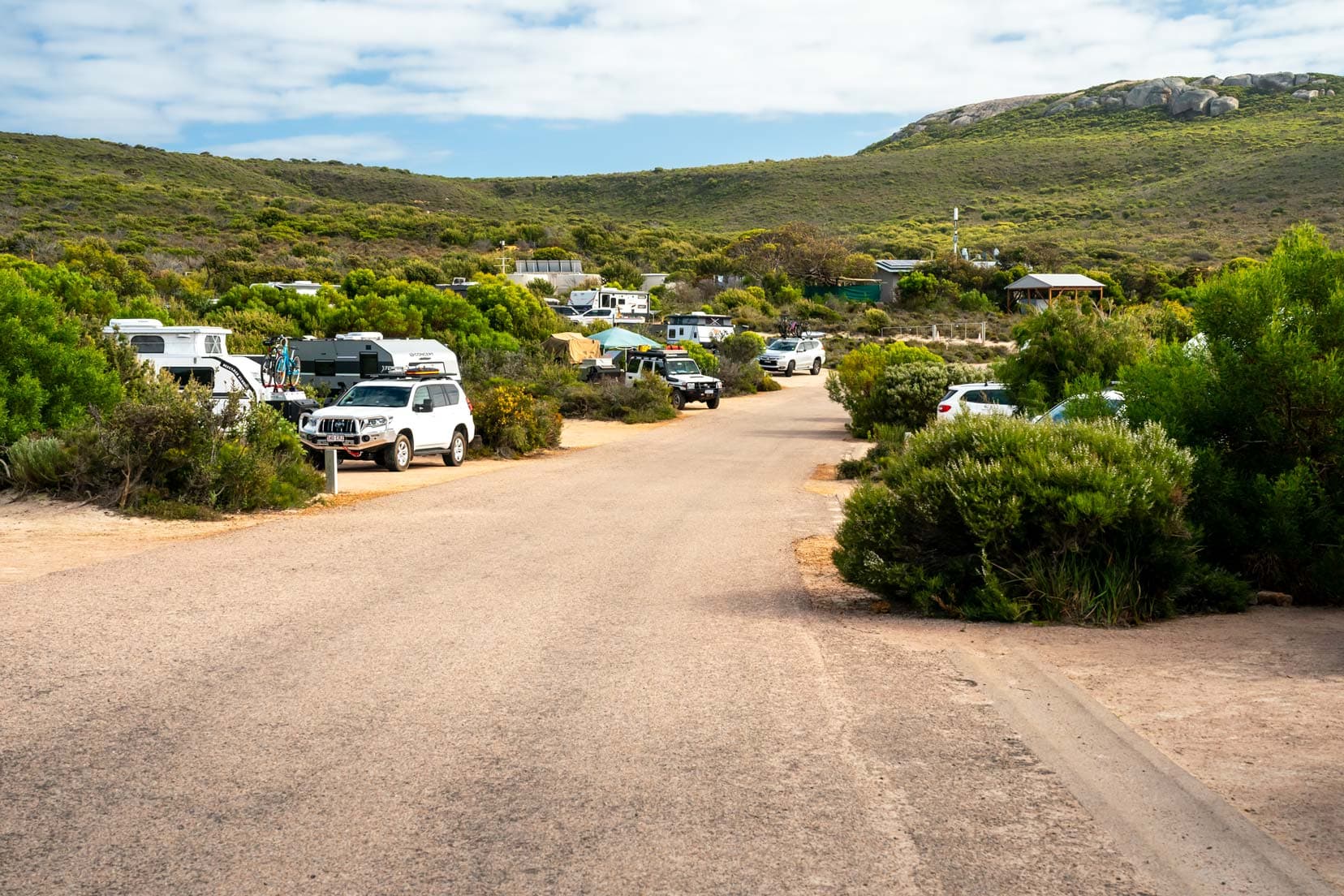
Walpole-Nornalup National Park
Nestled between the towering forests and beautiful coastline, Walpole is a wonderful beach and bush camping mix.
One of our favourite campgrounds is at Coalmine Beach Caravan Park, where you can wake up to the sounds of the forest and take a short drive to explore Conspicuous Cliff and the breathtaking Giant Tingle Trees.
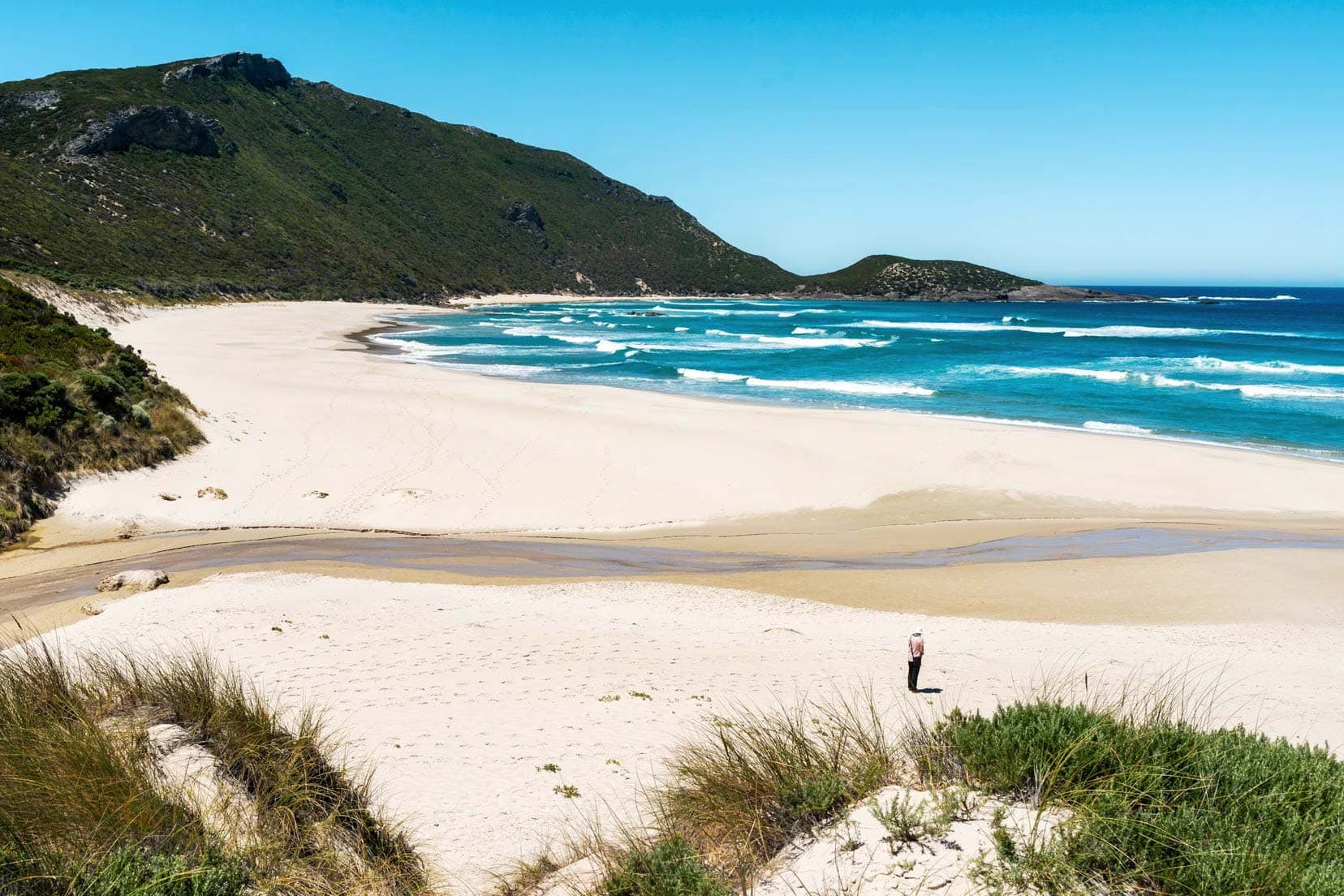
If you’re looking for something different, the Swarbrick Art Loop offers a unique blend of nature and art.
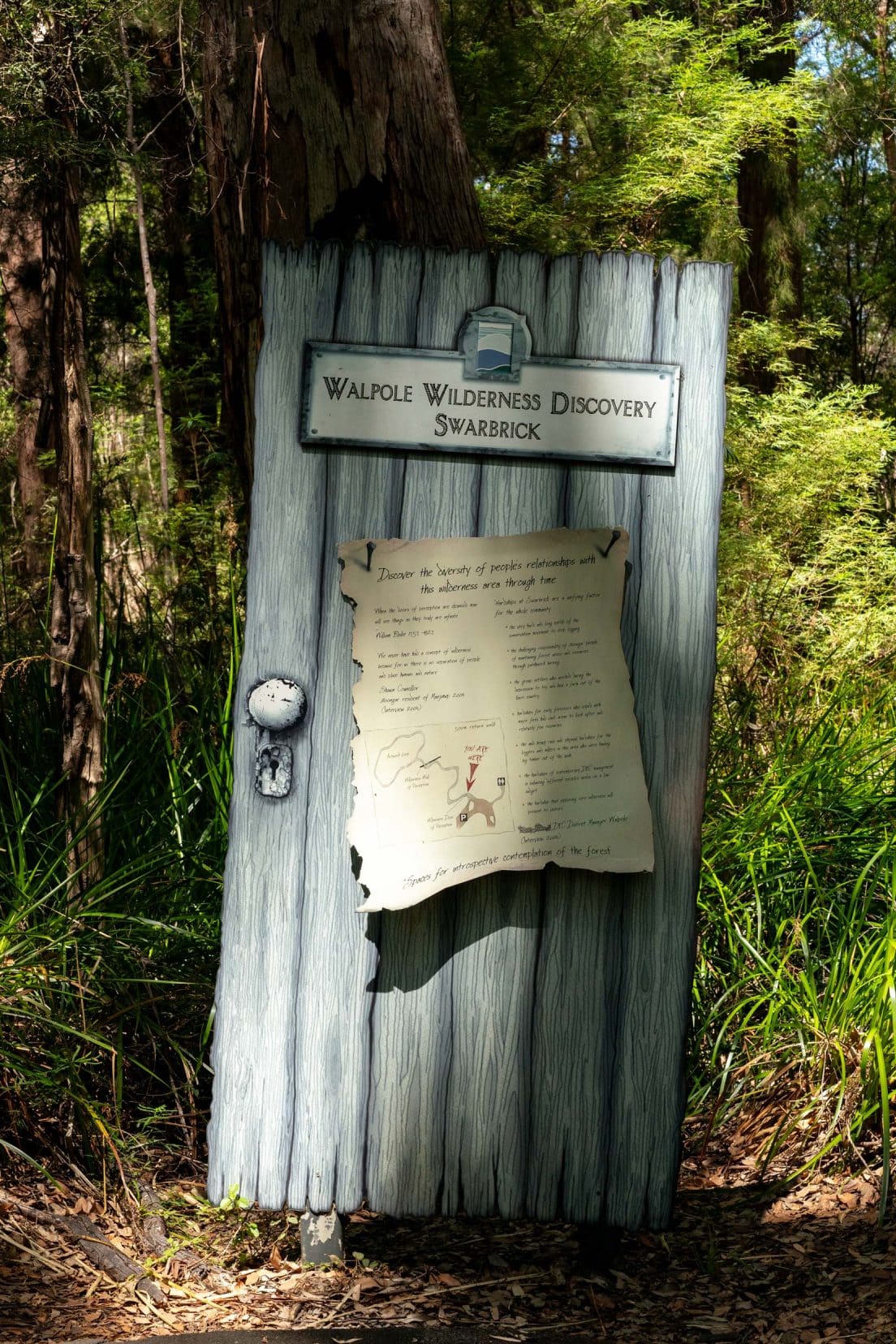
Denmark is just a bit further east of Walpole. Don’t miss visiting the incredible beaches on this stretch of coastline. Green’s Pool and Elephant Rocks are favourites, but there are so many gorgeous beaches along the coast that you are spoilt for choice.

▶️ Read More: For more fabulous places to visit in the south of WA, check out our article on our road trip loop from Perth to Esperance.
The Coral Coast
In the north, you have the incredible Coral Coast, with Exmouth and Coral Bay being popular camping destinations. Here, you’ll find the World Heritage Listed Ningaloo Reef, the largest fringe reef in Australia.

Coral Bay is just gorgeous for a more relaxed vibe (and typically less wind). The campsite is near the beach, and the snorkelling opportunities are fantastic. The main beach is safe and family-friendly, and the bakery is superb!
However, make sure to book outside of school holidays if you want to avoid the crowds.
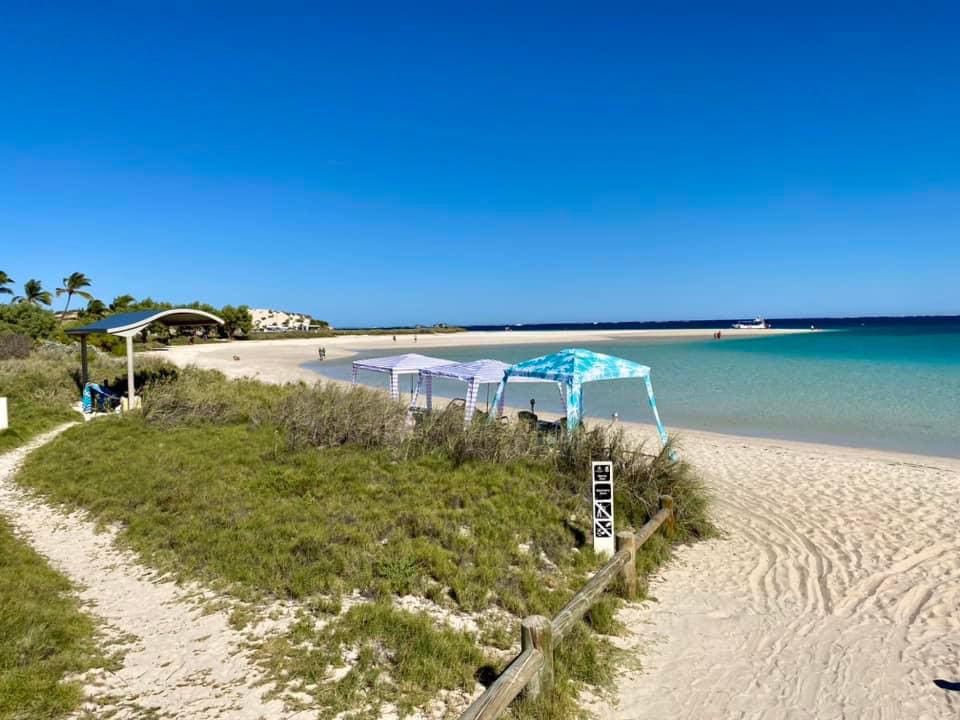
Exmouth, near Cape Range National Park, is more rugged and exposed than Coral Bay, but just as beautiful. Here, we saw endangered black-flanked wallabies while hiking the short Pilgonoman Gorge. near Kurrajong Campsite.
Exmouth also has impressive snorkelling, with drift snorkelling at several sandy beaches. Turquoise Bay is one of the most popular, but we found that snorkelling around the campsite at North Kurrajong was more relaxing and just as fruitful without worrying about rip tides.
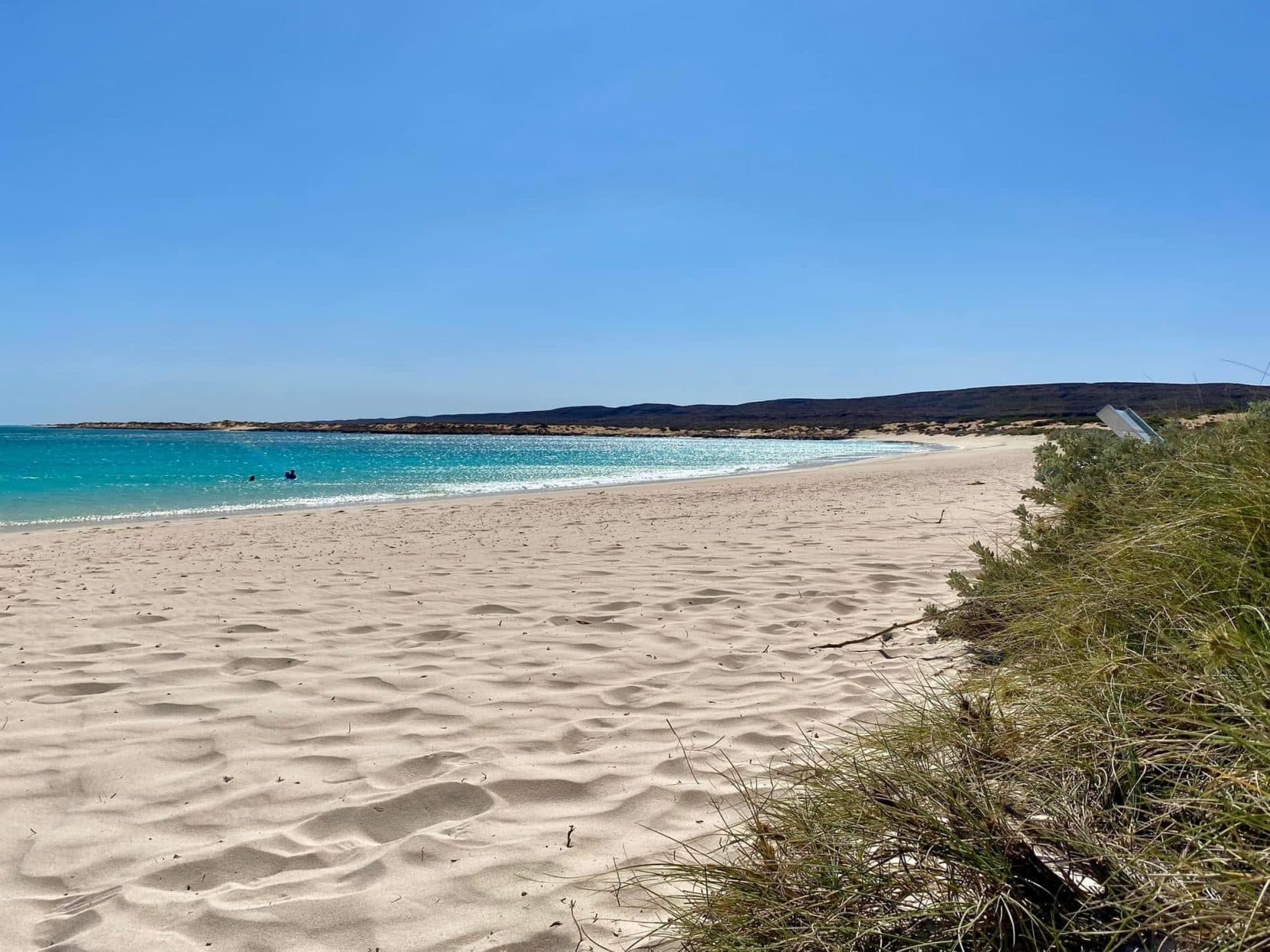
2. Outback Adventures
Karijini National Park (Pilbara)
For a true outback experience, Karijini National Park is hard to beat. Famous for its deep gorges and refreshing swimming holes, Kalamina Gorge and Fern Pool are perfect for cooling off after a hike.

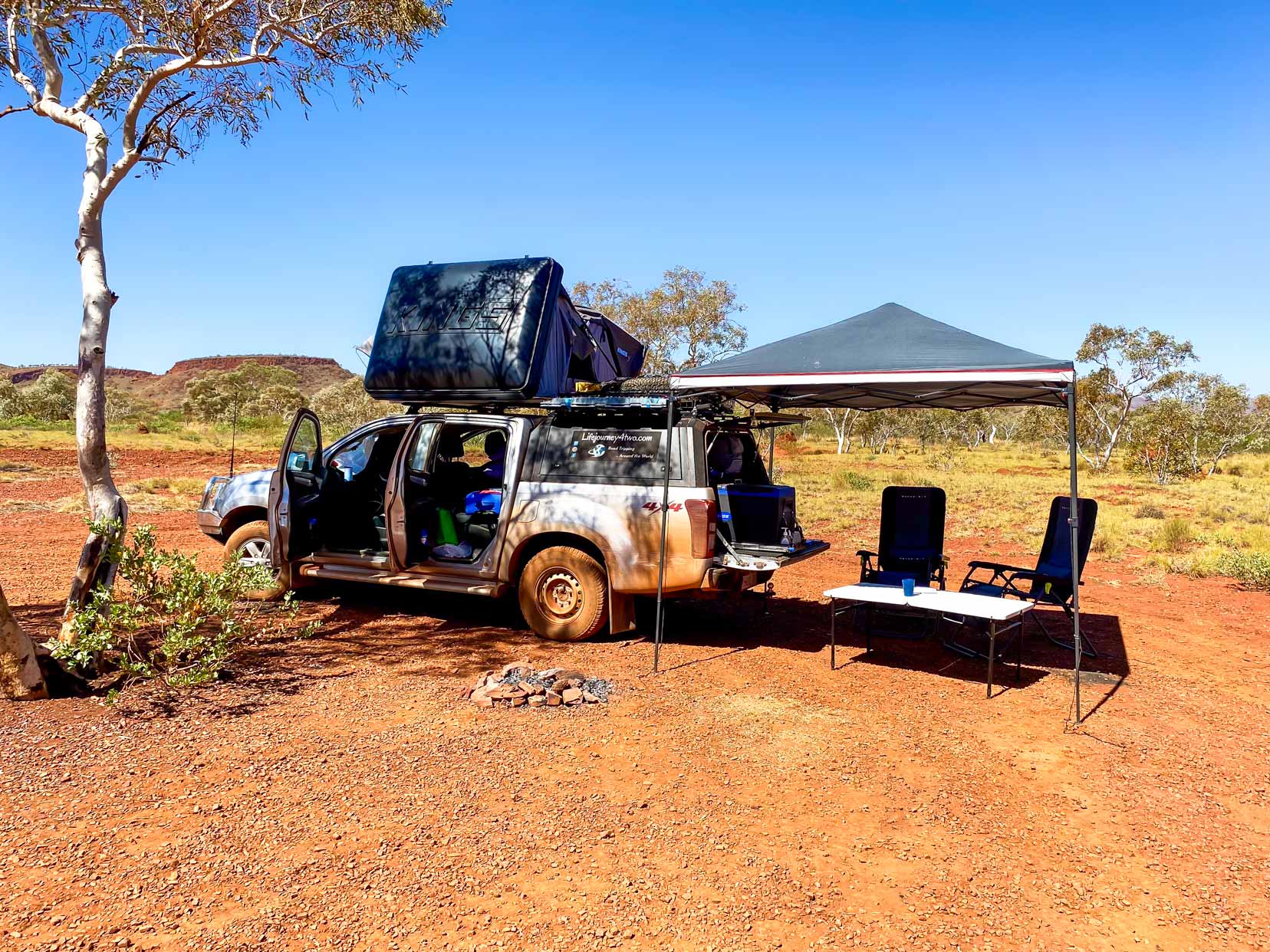
There are plenty of outback towns to visit if you are taking a road trip from Perth to Karijini.
One of our stops was at Sandstone, where we snapped this gorgeous photo of the London Bridge rock formation. Unlike the one in the UK, this one has been millions of years in the making.
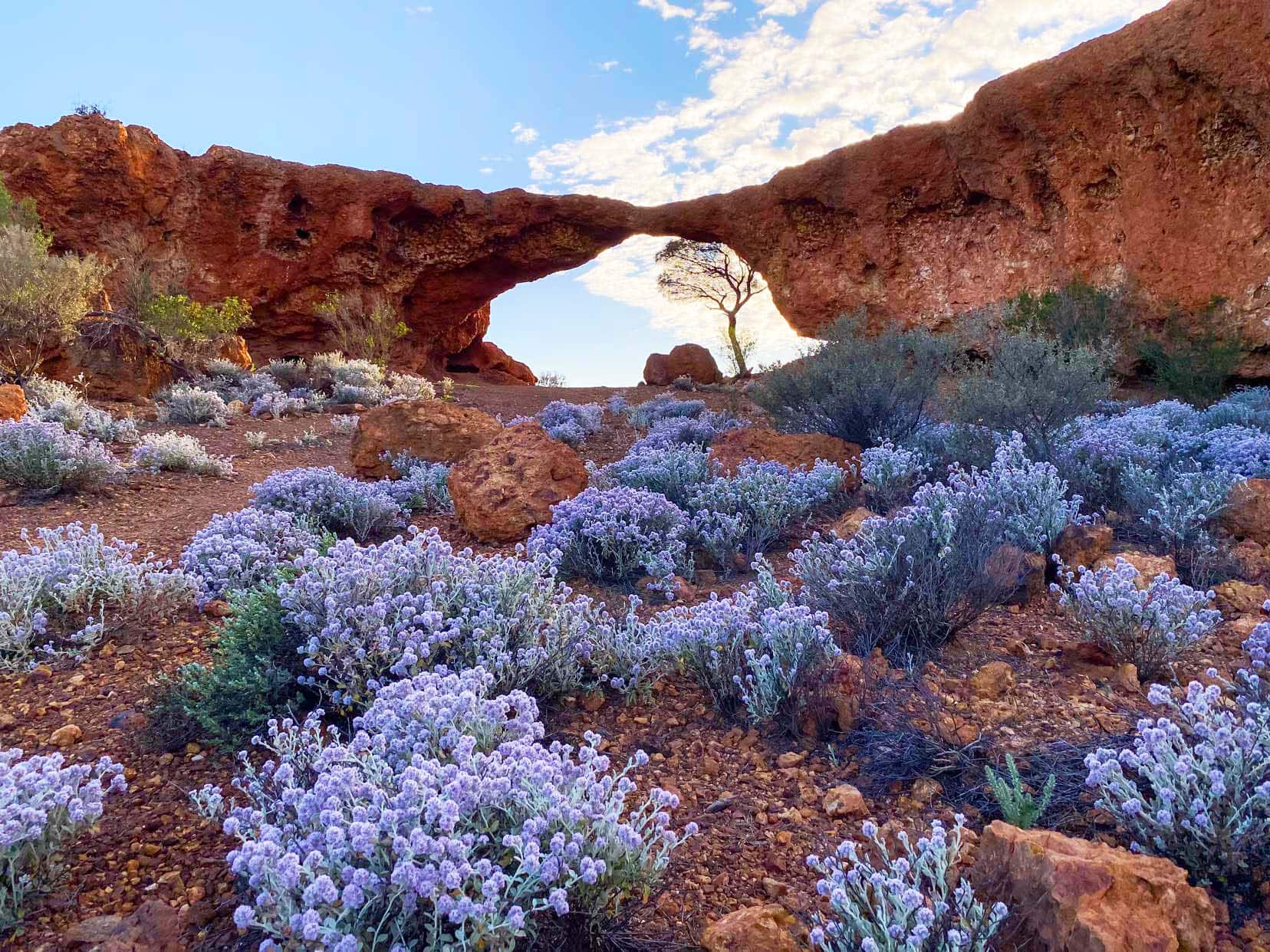
The Golden Outback
If you’re road-tripping across WA, you’ll be glad to know that many towns offer free camping spots. We experienced this firsthand on our Perth to Wave Rock Road Trip, where we stayed at Quairading’s free camp and several others in the Golden Outback.

Additionally, several outback towns show the RV Friendly sign, offering free or low-priced camps, often with toilets and kitchen facilities. It’s important to note that some of these camps require you to be fully self-contained, meaning you need your own toilet, water, and waste storage.
It’s a brilliant way to experience WA without breaking the bank, especially on longer road trips. We use Wikicamps to help us find these free camping spots.
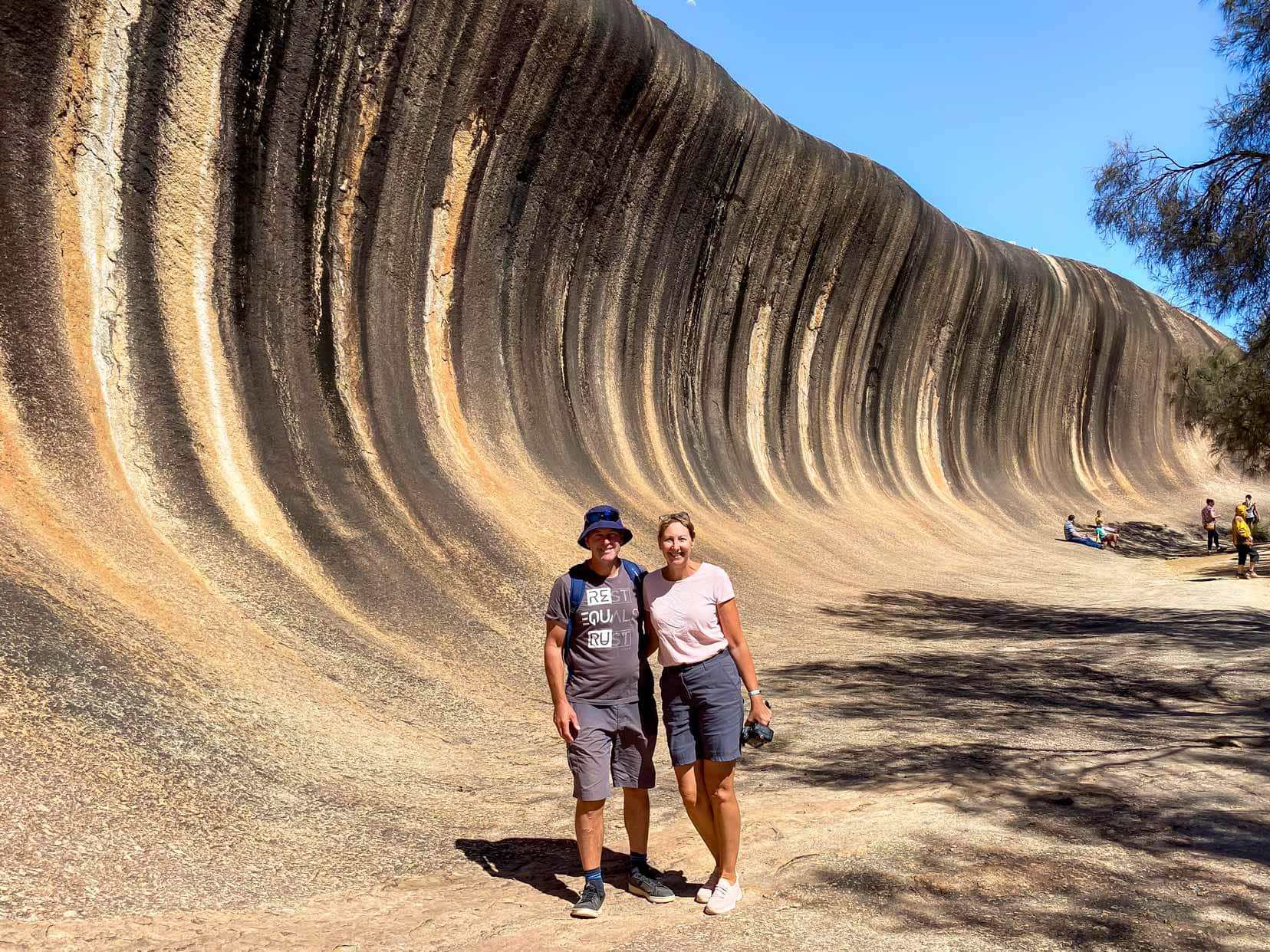
The iconic Wave Rock is a popular attraction if you’re hitting the Outback, with several other great places to see in the area, such as the Humps and Mulgas Cave, containing Aboriginal rock art from about 6000 years ago.
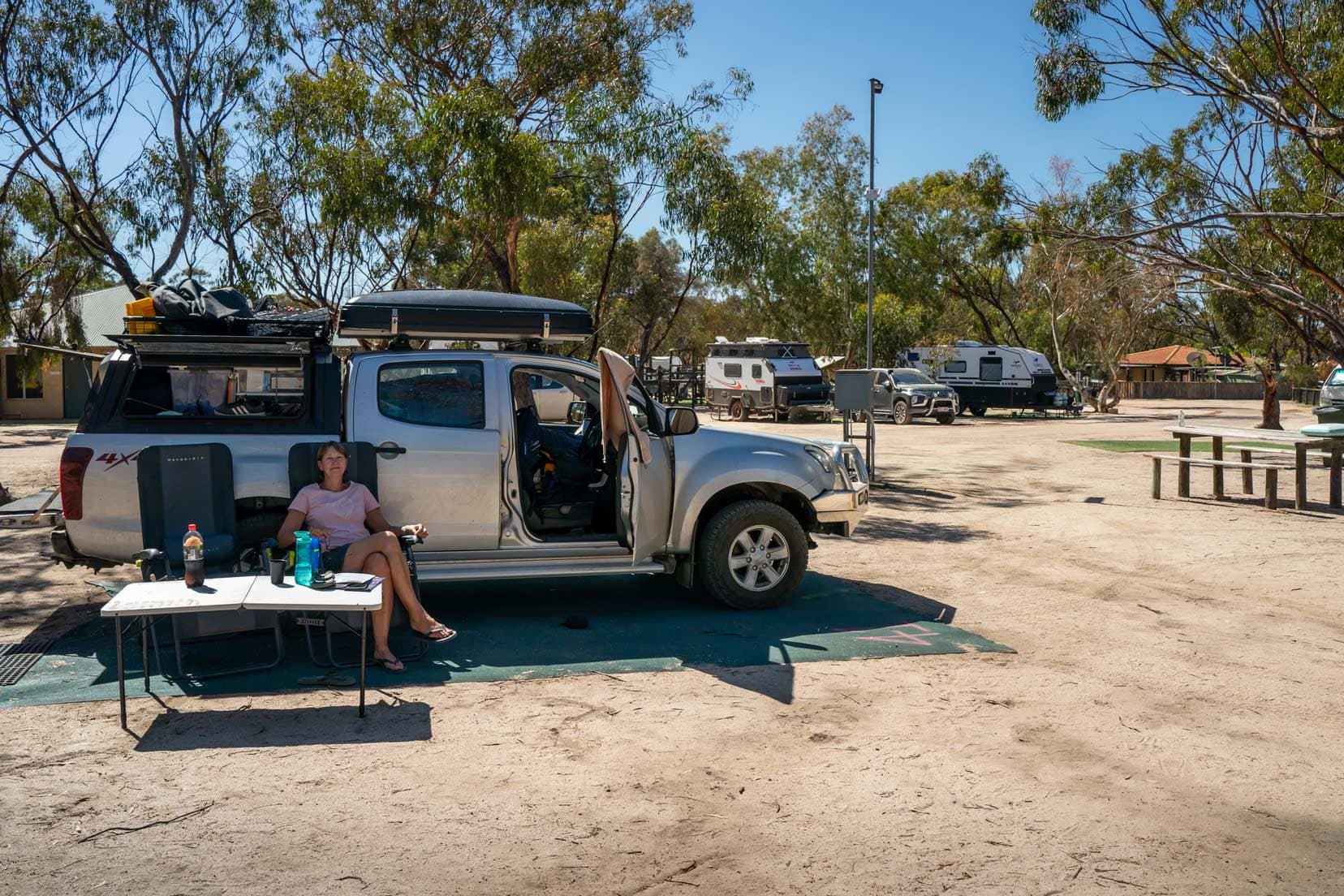
3. Forest and Wilderness Camping
Pemberton Region
In WA’s southwest, Pemberton is a haven for nature lovers, with its towering karri trees and serene camping spots. One of our favourite campsites in Warren National Park is at Drafty’s Camp on Heartbreak Trail, which weaves through the forest along the Warren River.
Camping in Warren National Park is a peaceful retreat, a great way to escape the hustle and bustle. You have the choice of two rustic woodland campsites to stay at here.
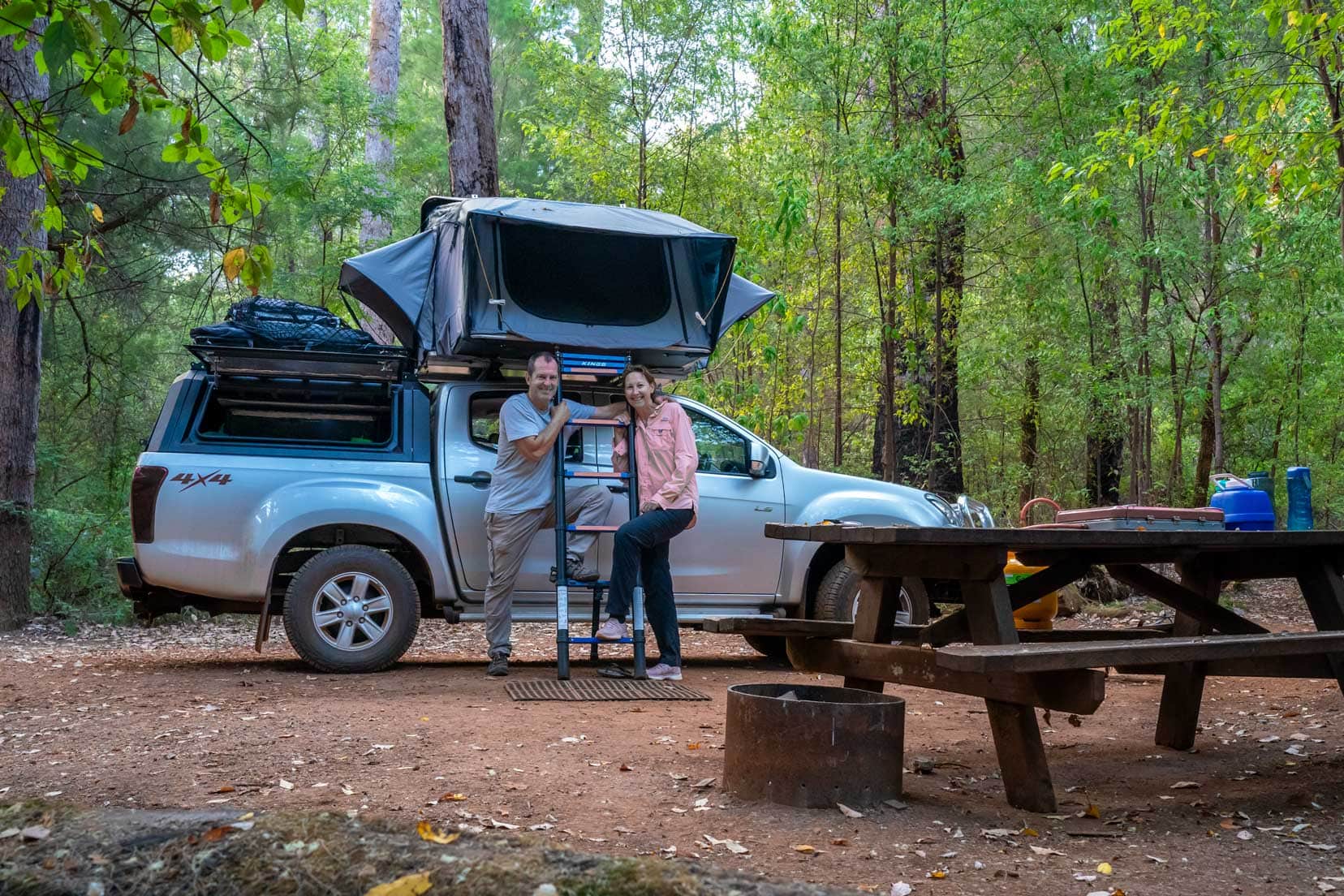
Honeymoon Pool (Collie)
Honeymoon Pool in Collie is one of our go-to camping spots for a relaxing riverside escape. The area is perfect for swimming and kayaking, and the surrounding forest creates a peaceful, scenic backdrop for a few days of camping.
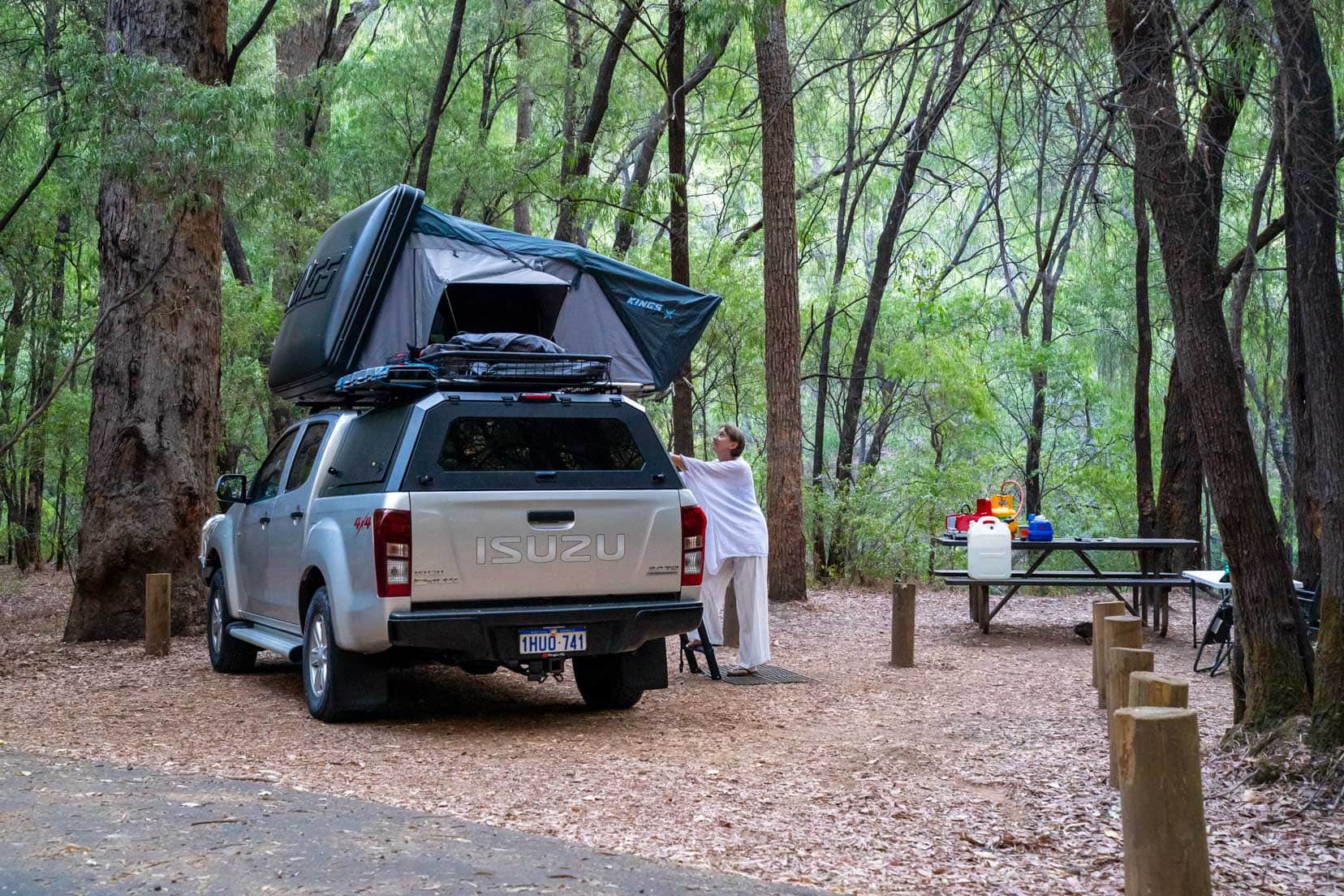
The southwest of Western Australia is one of our favourite places to camp, and there is plenty of opportunity for mindful ‘forest bathing‘.
Other favourite spots of ours in the south are Nannup (Barabup Pool and Worker Man’s campsites), Donnelly River, and, of course, Walpole, which has the best of both forest and beaches.
For a shorter run from Perth, Dwellingup’s Lane Poole Reserve is a fantastic place to camp among the forest with the bonus of freshwater swimming pools.

These are just a few camping spots that we love across WA. Whether you prefer beach camping, Outback adventures, or setting up camp in the forest, WA’s diverse landscape offers something for every camper.
What to Take on a Camping Trip in WA
Packing for a camping trip in Western Australia requires balancing practicality and comfort, especially when venturing into remote areas.
After years of camping across WA and beyond, we’ve streamlined our gear to the essentials that work no matter where we’re headed, whether it’s the pristine beaches around the coastline or WA’s rugged outback.
Here’s a quick overview of the essential gear we rely on for our adventures:
1. Shelter and Sleeping Gear
Whether camping in a national park or a more remote spot, a reliable shelter is key. We currently have a rooftop tent, which is easy to set up, and quality sleeping bags.
We bought our his and hers sleeping bags from Kings and are very happy with them. They have a flannelette inside that can be removed, so we can use just that if it’s hot or both for the colder weather.
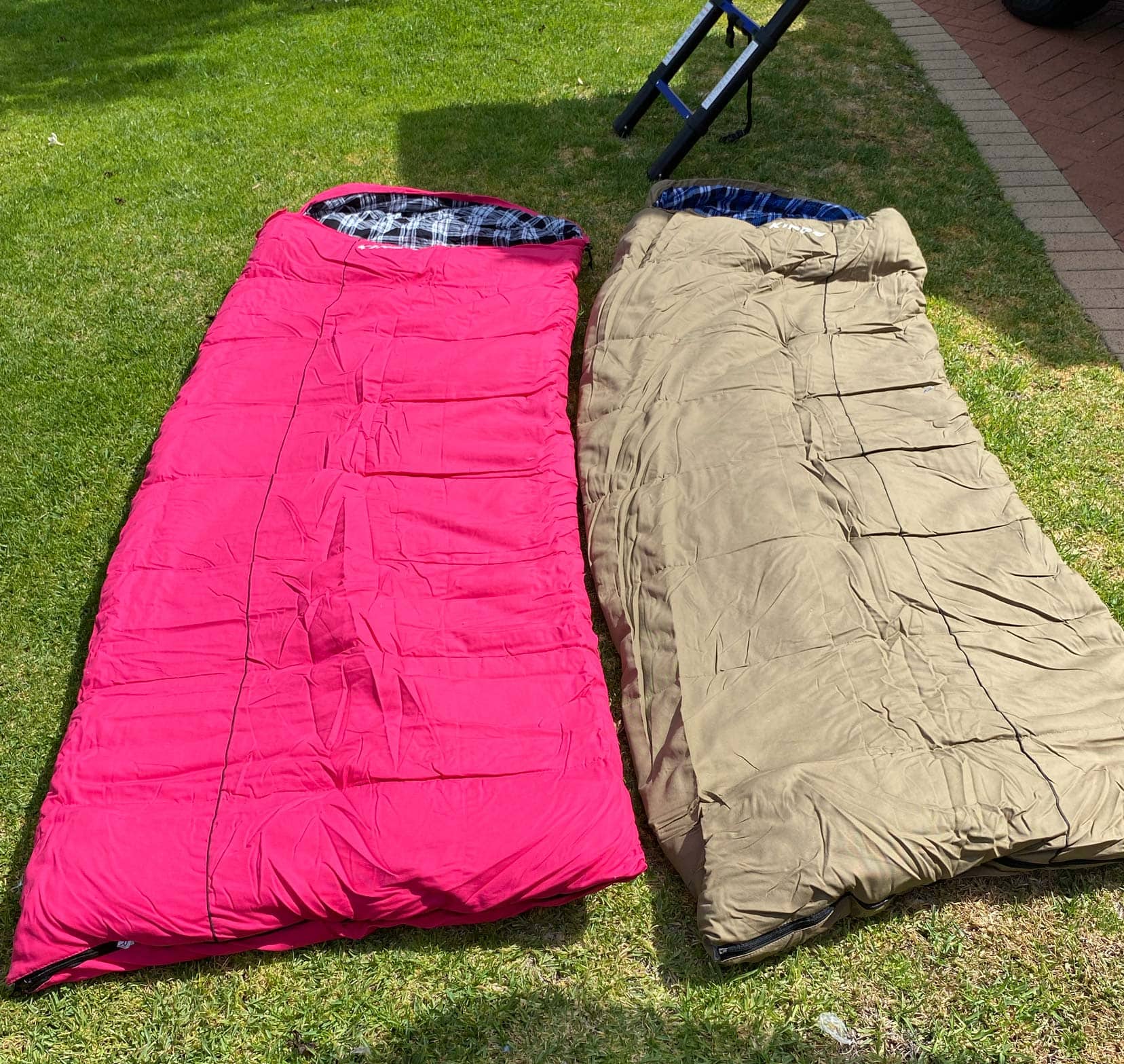
We prefer to sleep with the tent flaps open (with the inner mosquito net closed) to prevent condensation from building up inside the tent and making everything wet. Having cosy sleeping bags makes a significant difference once the sun goes down.
Our Tourer X rooftop tent has been great (apart from the latches needing to be replaced). Still, after one too many windy nights, especially in areas like Esperance or Exmouth, we’re considering a caravan for longer trips.
On our Perth to Karijini trip, being unable to escape the wind and flies in the tent tested our patience. Flies are one of the things that can hamper your enjoyment of camping and outdoor life in Australia.
Therefore, make sure you have fly screens in your tents and caravans!
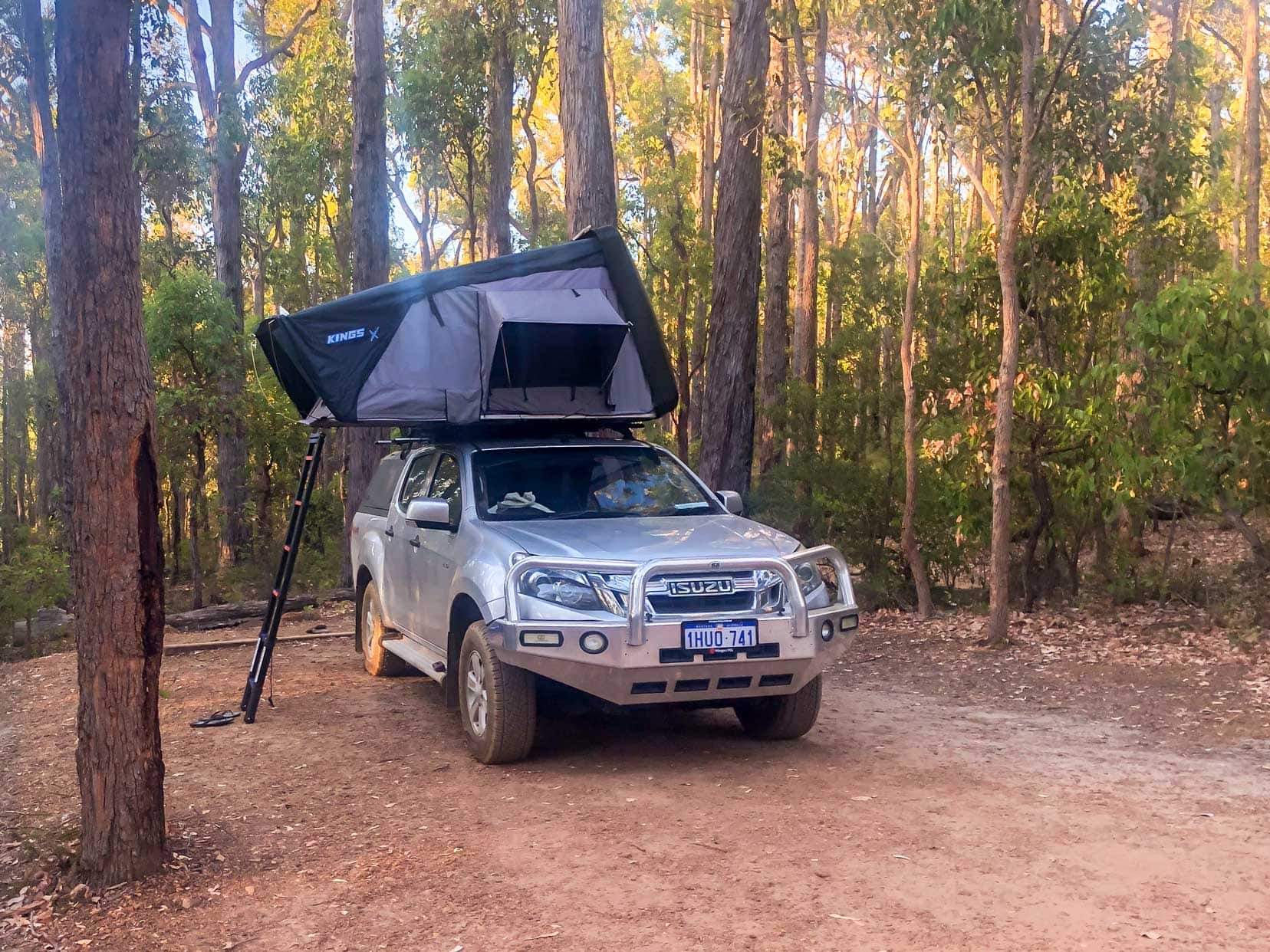
2. Cooking Essentials
Camping meals don’t have to be complicated, but having the right tools makes a big difference. Our go-to gear includes a portable stove, lightweight cookware, and collapsible food containers—perfect for maximising our limited space.
Note that in Western Australia, there are times when there are total fire bans, so you might not be able to cook on a campfire. You are allowed to use a portable gas stove, though.
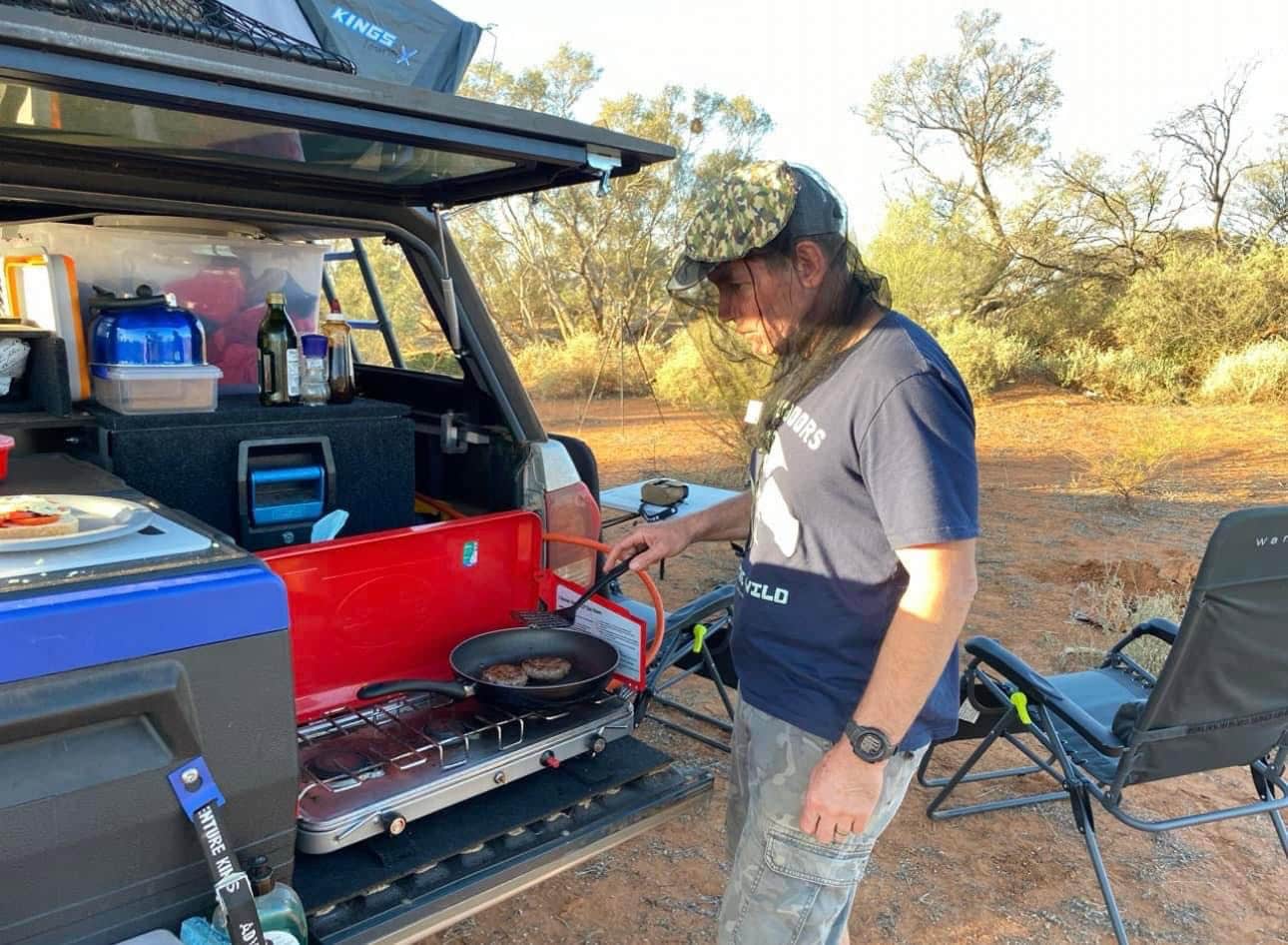
3. Packing Efficiency
We customised our Isuzu D-Max with pullout storage drawers, an over-arch water tank, and more to maximise space and keep our gear organised.
This setup has been a game-changer, helping us access gear efficiently and keeping everything tidy during our trips.
If you’re looking for practical ways to upgrade your vehicle for camping, check out our complete guide on how we kitted out our Isuzu for camping.
4. Power and Lighting
Powering up when off-grid is essential, especially when camping in places like Israelite Bay and Karijini.
The remoteness of Karijini means it’s essential to come prepared with proper camping gear. We rely on our solar blanket and lithium battery to keep everything powered when we’re far off the grid.
5. Safety Gear
Safety is crucial, particularly if you’re heading into more remote areas. Here are a few things that help us prepare for emergencies and are part of our ‘just-in-case arsenal’.
- First aid kit
- Snake Bite Kit
- Personal Locator Beacon
- Oricom CB Radio (Use our code LIFE15 for 15% off storewide)
- Recovery Treads
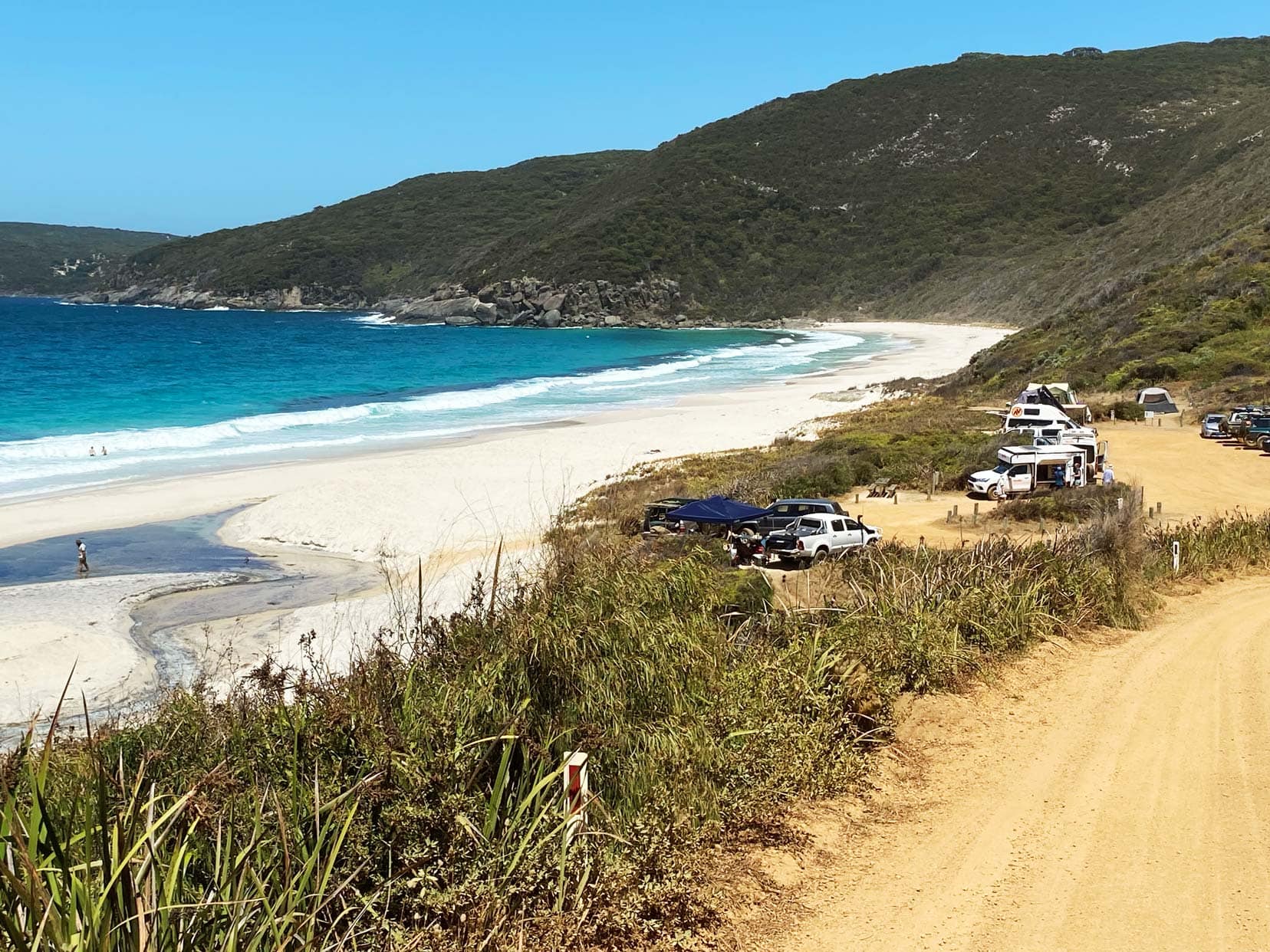
6. Comfort and Extras
We pack camping chairs, a small table, and mosquito head nets for added comfort. These little extras make the campsite feel like home and allow us to more easily relax in the beautiful WA wilderness.
Download our full camping checklist here for a detailed cost breakdown of all our gear, including our top recommendations for a comfortable trip:
Also, check out our Camping and 4×4 Gear Top Ten Essentials. After years of road trips and camping across WA, we’ve carefully chosen these must-have items, and we know they’ll make your adventure smoother and more enjoyable.
When is the Best Time to Camp in WA?
The best time to camp in Western Australia depends on the region and your camping style. Here’s a breakdown of the ideal camping seasons across WA:
Camping in Northern WA (Kimberley, Pilbara, Karijini)
The dry season from May to October is the best time for camping in northern WA. The cooler weather and absence of rain make it perfect for exploring the stunning gorges and waterholes of Karijini National Park and other northern destinations.

We stayed in Exmouth in early September, and the weather was lovely, but the winds were strong.
Camping in Southern WA (Margaret River, Esperance, Walpole)
The warmer months from November to April are ideal for camping in South WA. Beachside spots like Cape Le Grand and Wharton Beach shine during this period.
Winter in the south can be cold and wet, making it less desirable unless you’re well-equipped for cooler conditions. However, there will be fewer flies and tourists!
Wildflower Season in WA
For wildflower enthusiasts, late August to September is the peak season for witnessing WA’s vibrant wildflower display.
Coalseam Conservation Park, located in the heart of wildflower country, is a breathtaking place to camp during this season. The hillsides are covered in yellows, pinks and whites.
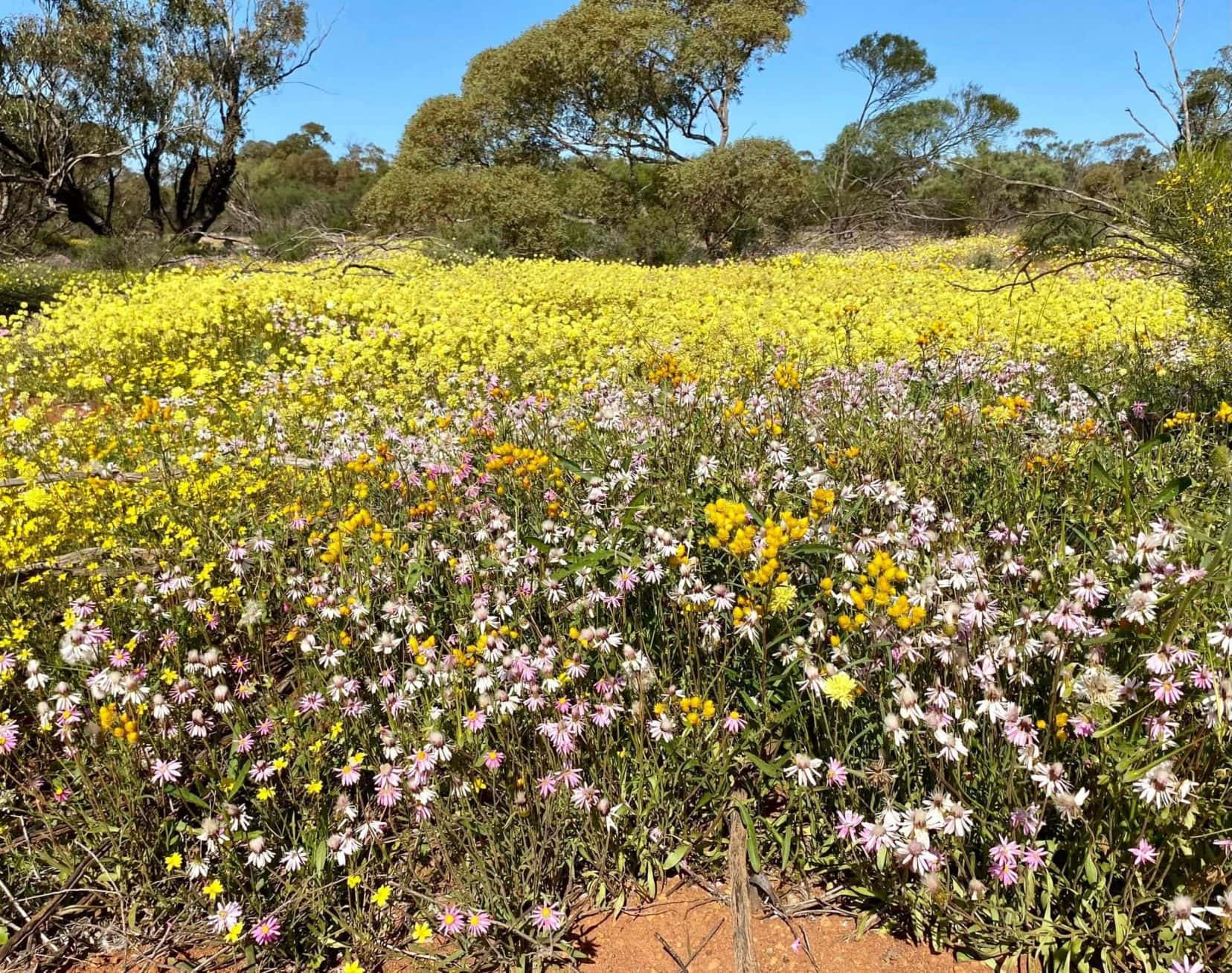
Camping During Shoulder Seasons
The shoulder seasons (from March to May and September to November) are fantastic for camping across WA. With mild temperatures and fewer crowds, it’s an excellent time to explore both the north and south without the extremes of summer or winter.
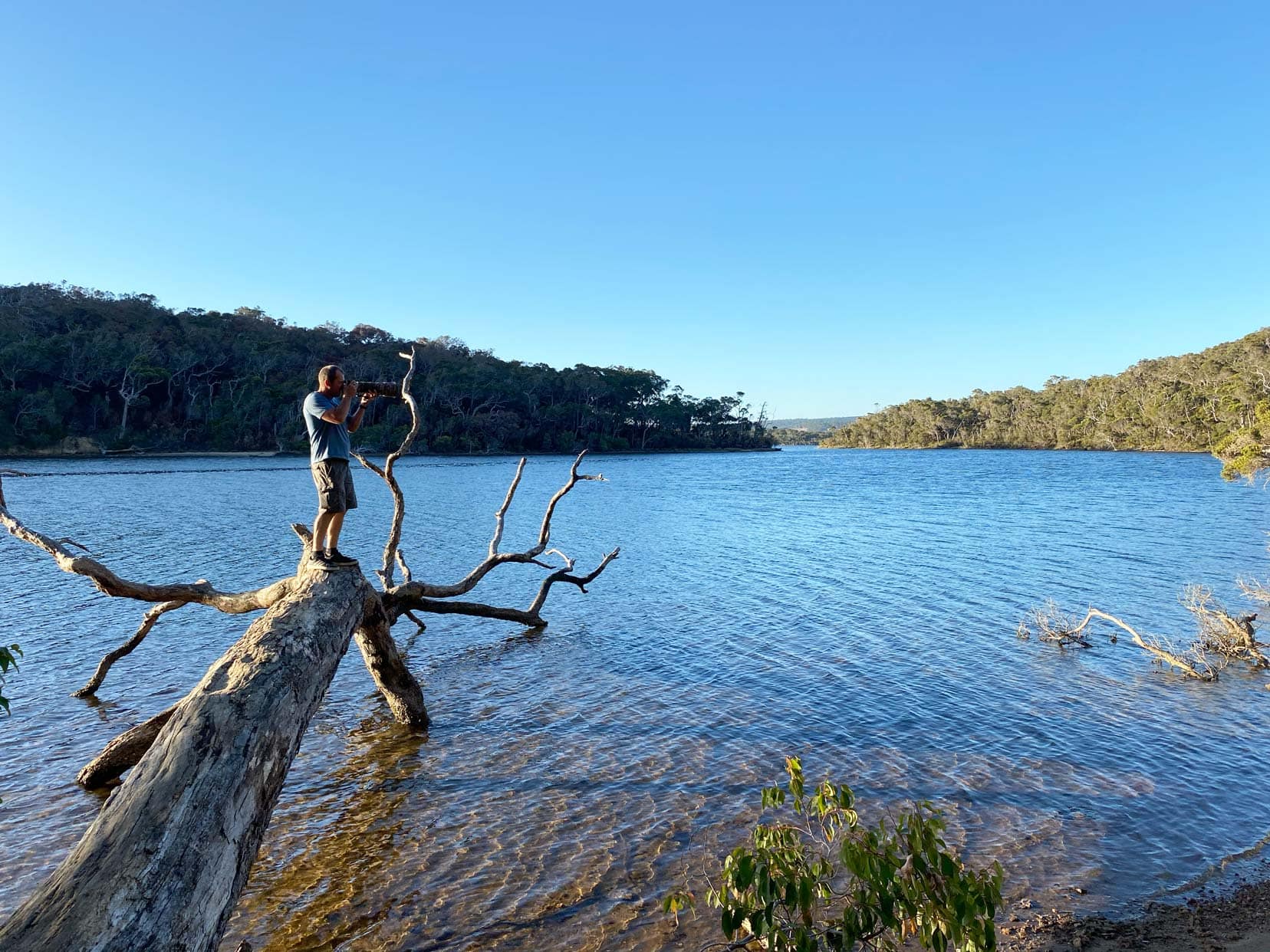
Avoiding WA School Holidays
Camping is a popular activity for WA families, especially during school holidays. Because campsites are busier, you need to book well in advance.
If you’re looking for a quieter experience, avoiding camping during these peak periods, particularly the school holidays in April, July, September, and the Christmas/New Year break, is best.
This is particularly true for places like Coral Bay, which is popular with families.
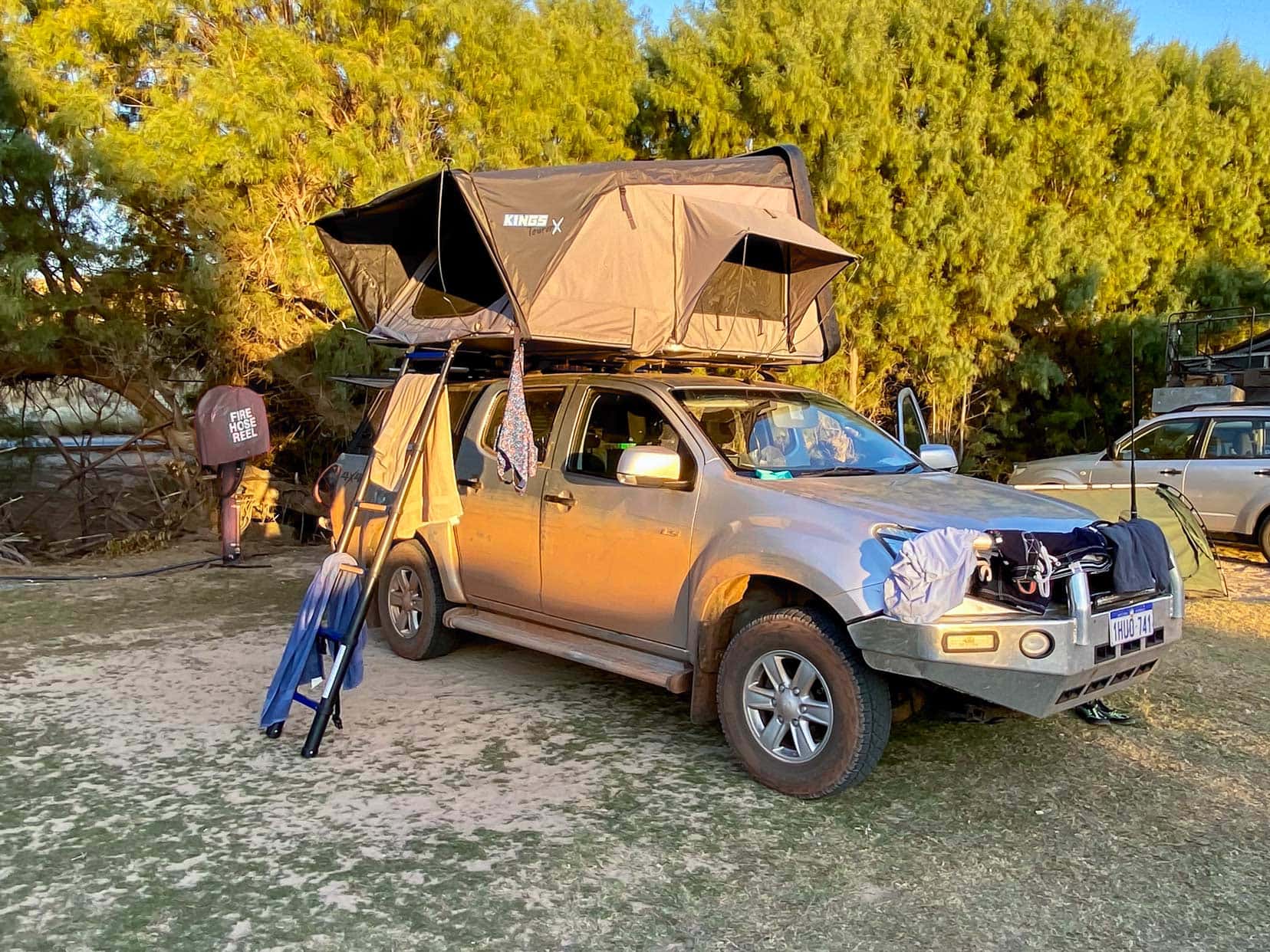
Planning Your Camping Trip in Western Australia
Before setting off on your WA camping adventure, there are a few key logistical details to consider. From booking campsites to understanding entry fees, proper planning will help ensure your trip goes smoothly.
National Park Fees
Most of Western Australia’s stunning national parks require both vehicle access fees and camping fees. Here’s a breakdown of what to expect:
- Vehicle Access Fees: As of 2024, the daily fee is $17 per vehicle (or $10 for concession holders).
- Holiday and Annual Passes: If you plan on visiting multiple parks or staying for an extended period, purchasing a pass can save you money:
- Annual All Parks Pass: $130 – unlimited access to all WA national parks for 12 months.
- 4-Week Pass: $70 – ideal for longer trips.
- 14-Day Pass: $50 – great for regional trips.
- 5-Day Pass: $30 – perfect for shorter breaks.
These passes allow you to visit multiple parks in one day for a single entry fee, making them an excellent option for road trips.
- Camping Fees: Campsite fees within national parks generally range from $10 to $20 per person per night. Some campsites, particularly in popular parks like Karijini or Cape Le Grand, require advance booking, while others operate on a first-come, first-served basis.
To secure your campsite, it’s best to book online through the Parks and Wildlife Service (DPAW) website, especially during peak seasons. More information on passes and booking can be found here.
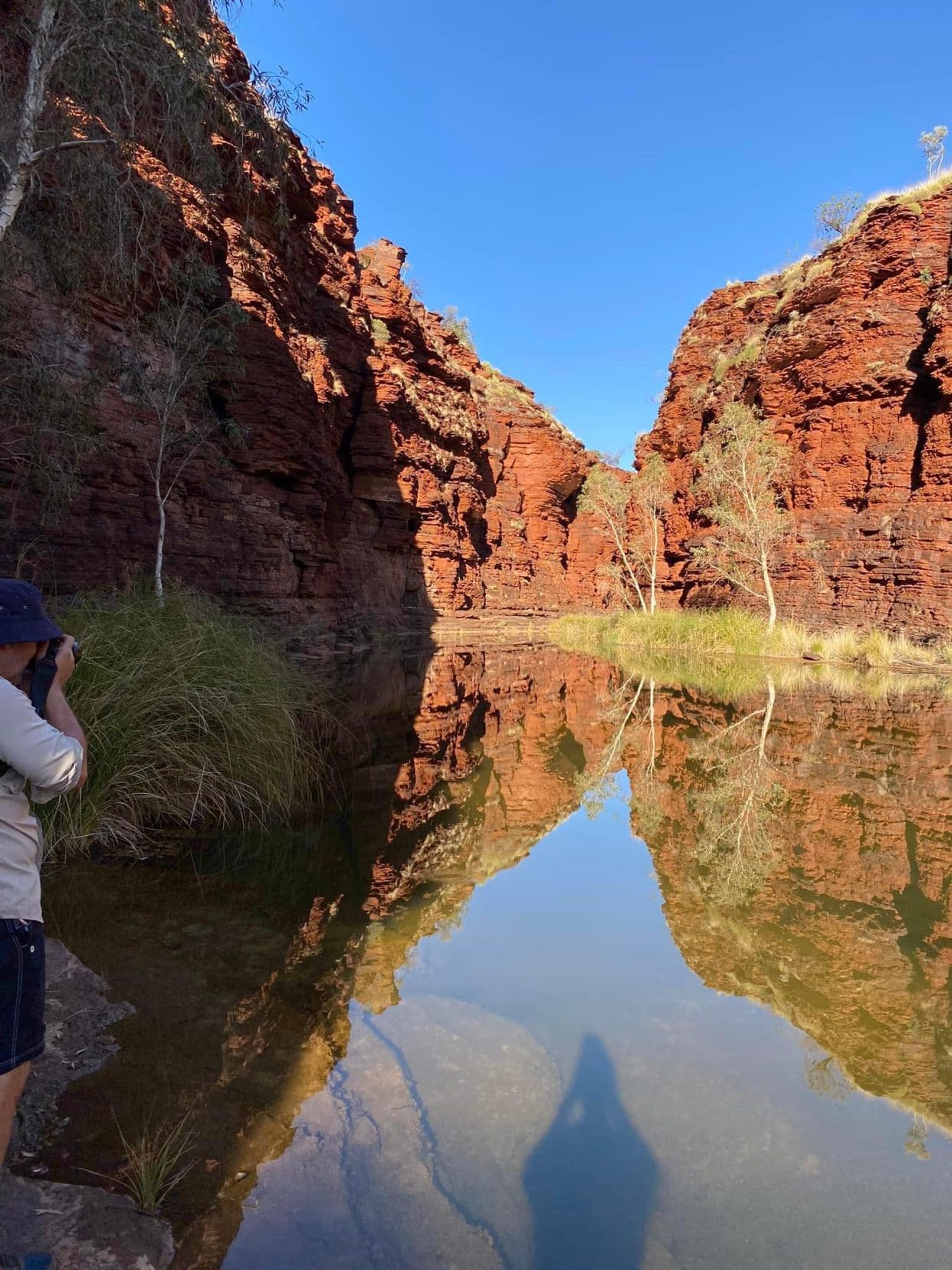
Booking Campsites
Western Australia’s most popular national park campsites, such as those in Cape Range and Ningaloo Reef, and those on the south coast, fill up quickly.
Booking in advance is strongly recommended during peak travel times (like school holidays). Other parks offer first-come, first-served camping, so it’s a good idea to arrive early to secure a spot.
For budget-conscious travellers, there are also several free or low-cost campsites across WA. Many of these are located in RV-friendly towns or designated rest areas, perfect for those doing longer road trips.
Common Camping Mistakes to Avoid in Western Australia
Camping in Western Australia can be an unforgettable experience, but a few common mistakes can quickly turn a great trip into a stressful one. Here are some top camping mistakes to avoid:
1. Underestimating the Weather
WA’s weather can be extreme, especially in the outback and coastal regions. Don’t underestimate how cold the nights can get in the desert or how strong the wind can be on the coast. Always pack for variable weather, including extra layers.
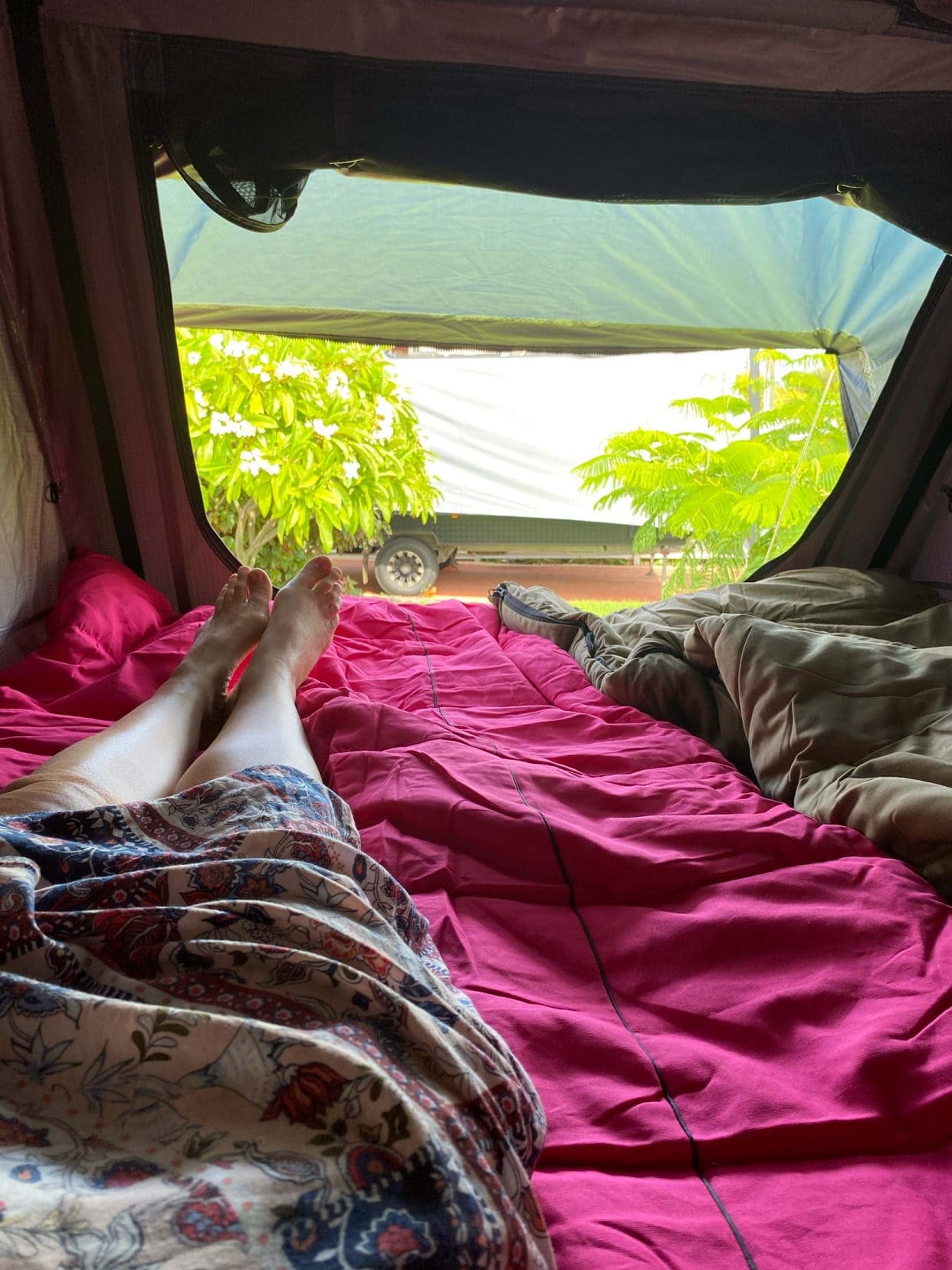
2. Not Booking Campsites in Advance
Many popular campsites, especially in WA’s national parks like Karijini or Cape Le Grand, fill up quickly, particularly during school holidays. Book well in advance to avoid disappointment, especially if you plan to visit during peak seasons.
3. Arriving at Campsites Late
Always plan to arrive at your campsite with enough daylight to set up. Arriving late makes setting up harder and risks missing key campsite information or finding a spot.
Plus, navigating unlit roads in remote areas after dark can be dangerous as wildlife, especially kangaroos, seem to be on a kamikaze mission when it’s dark.
4. Ignoring Park or Campground Rules
Many campgrounds have strict rules regarding campfires, waste disposal, and noise levels. Ignoring these rules harms the environment and can result in fines. Always check local regulations and leave no trace behind.
5. Not Being Prepared for Pests
Be Prepared for Flies!
Bush flies thrive after rainfall and in warm temperatures. They love feeding on cattle dung, so if you are camping in the outback or around agricultural areas in these conditions, expect flies. The bush flies are harmless but annoying – trying to crawl into your eyes and nose!
However, there is another fly that is not so harmless: the March fly (or horsefly). These like to bite, and it hurts! They are generally active in the summer months, especially around woodland and pools.
You’ll also battle mosquitoes and sandflies in some areas … be prepared!
Ensure insect screens are installed in tents and caravans. Wear long sleeves and pants, and use insect repellent. This will help, but it won’t completely deter them.
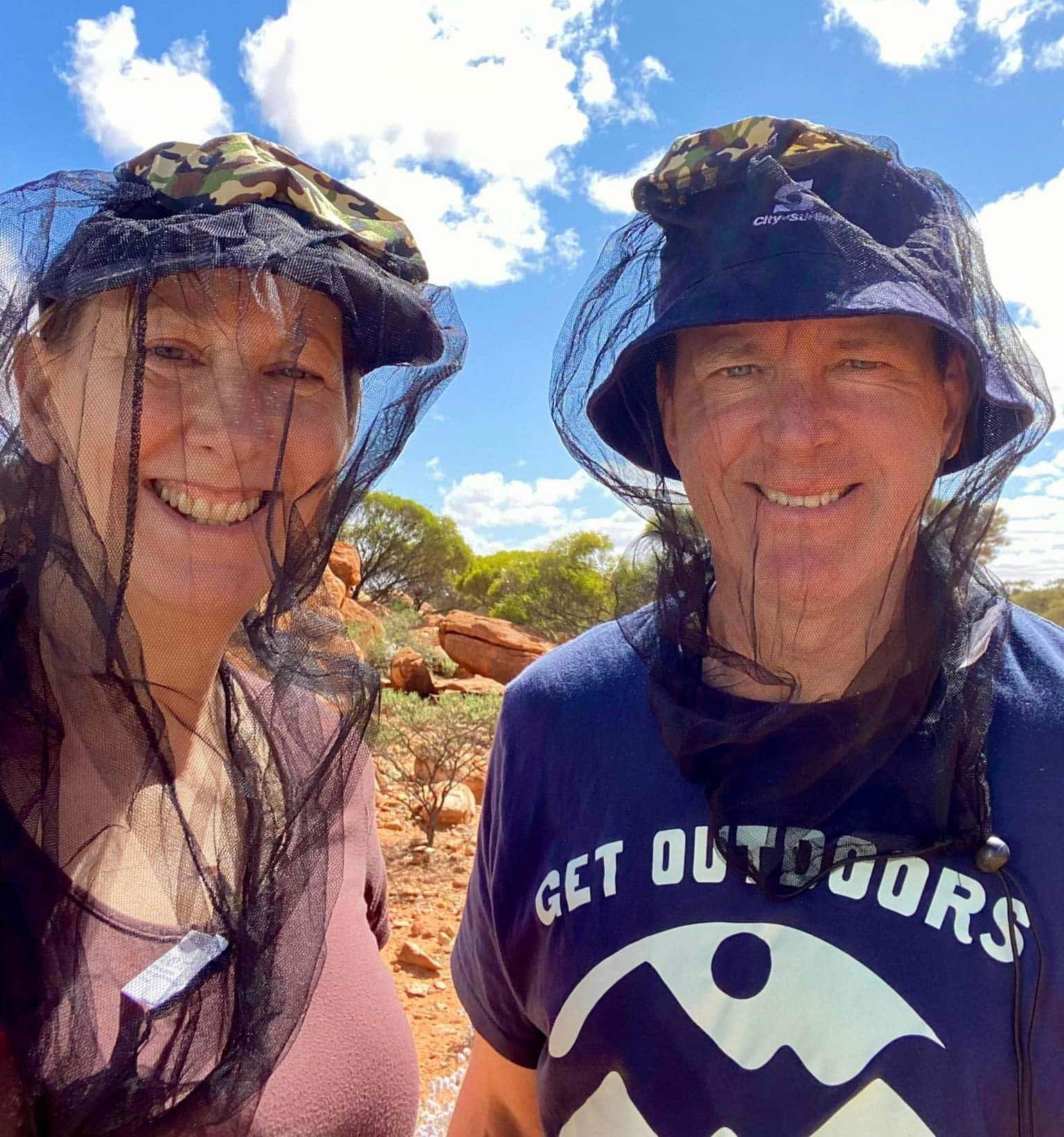
6. Overpacking or Underpacking
It’s easy to overpack and bring too much gear, making your setup bulky and challenging to manage. On the other hand, underpacking can leave you without essential items like enough water, warm clothing, or emergency equipment.
A balance is key—use a checklist to ensure you have what you need without overloading.
And try to have a system!
7. Not Bringing Enough Water
Water sources are scarce in many parts of WA, particularly in the outback. Always bring more water than you think you’ll need, as some campsites may not have potable (drinking) water. Plan for at least 5 litres per person per day when in remote areas.
8. Failing to Check Vehicle Access
Some remote campsites require a 4WD. Always check if your destination is accessible with your vehicle type to avoid getting stuck.
9. Skipping Basic Safety Gear
The right safety equipment is crucial when camping, especially in remote locations. Always bring a first aid kit, recovery treads for your vehicle, and a PLB (Personal Locator Beacon) for emergencies, particularly when camping far from civilisation.
10. Not Respecting Wildlife
Western Australia is home to diverse wildlife, from kangaroos to dingoes. Respect local wildlife by not feeding animals and keeping a safe distance. Store food properly to avoid attracting unwanted visitors to your campsite.
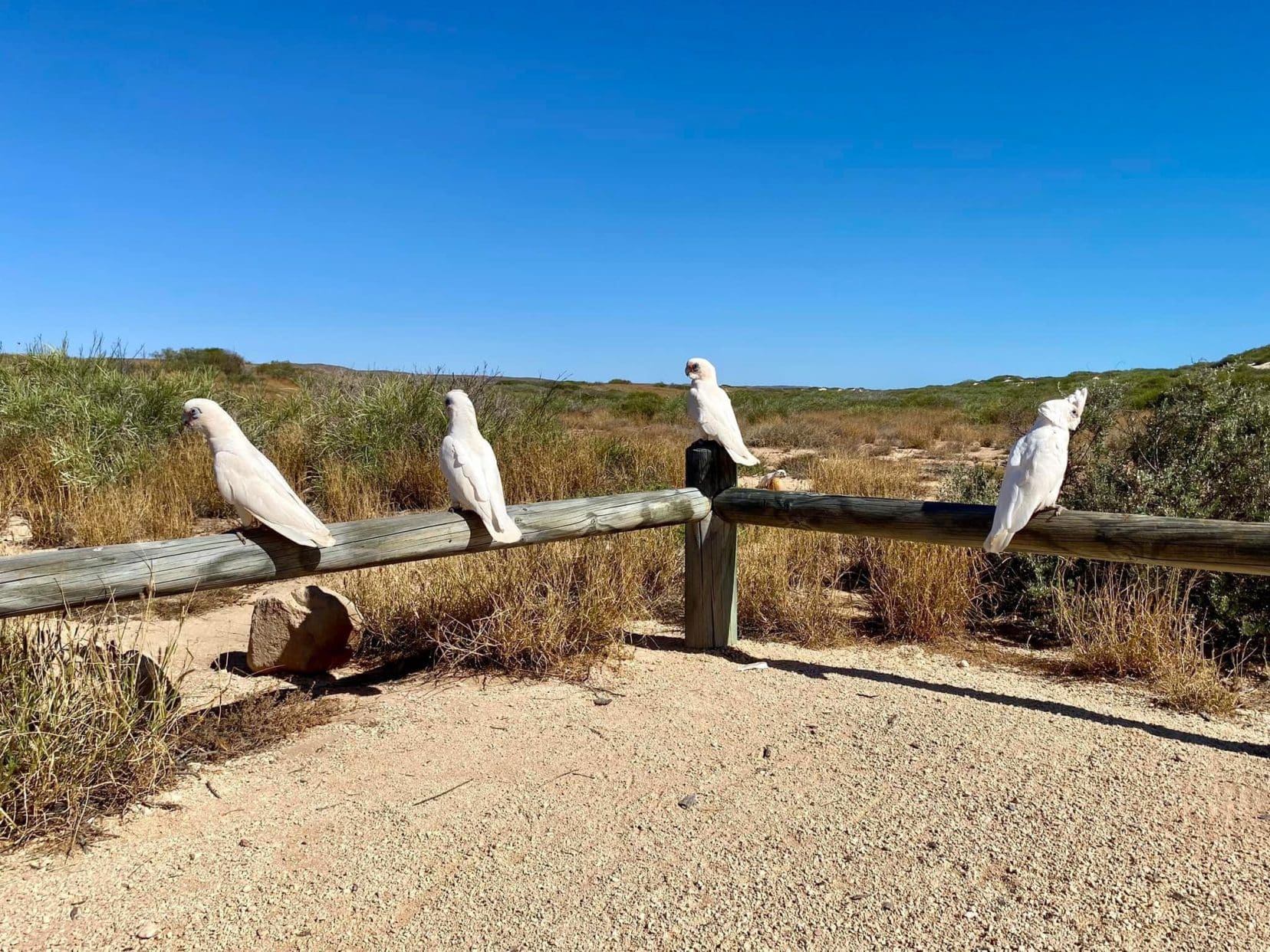
FAQs Camping In Western Australia
1. Can You Camp at Any Beach in WA?
No, you can’t camp on just any beach in Western Australia. Most beaches near towns and cities have strict rules against camping to preserve the environment and maintain public safety.
However, there are some stunning, more remote beaches where camping is allowed, such as Lucky Bay in Cape Le Grand National Park. This beachside campsite offers incredible views, kangaroos on the sand, and a safe, legal spot for beach camping.
Other remote beach camps, like those at Israelite Bay, are great alternatives to the busier locations. Just remember, many beach camping areas require a 4WD to access, and it’s always important to follow local regulations and respect the environment by cleaning up after yourself.
2. Can You Sleep in Your Car in Western Australia?
Yes, you can sleep in your car in WA, but it’s important to do so in designated areas. Free camping or roadside sleeping is not allowed in most towns and popular tourist spots, but there are plenty of campgrounds and rest areas where sleeping in your vehicle is permitted.
Be sure to check local signage and regulations to avoid fines. For a more scenic experience, campgrounds along WA’s road trip routes offer beautiful settings for a night under the stars.
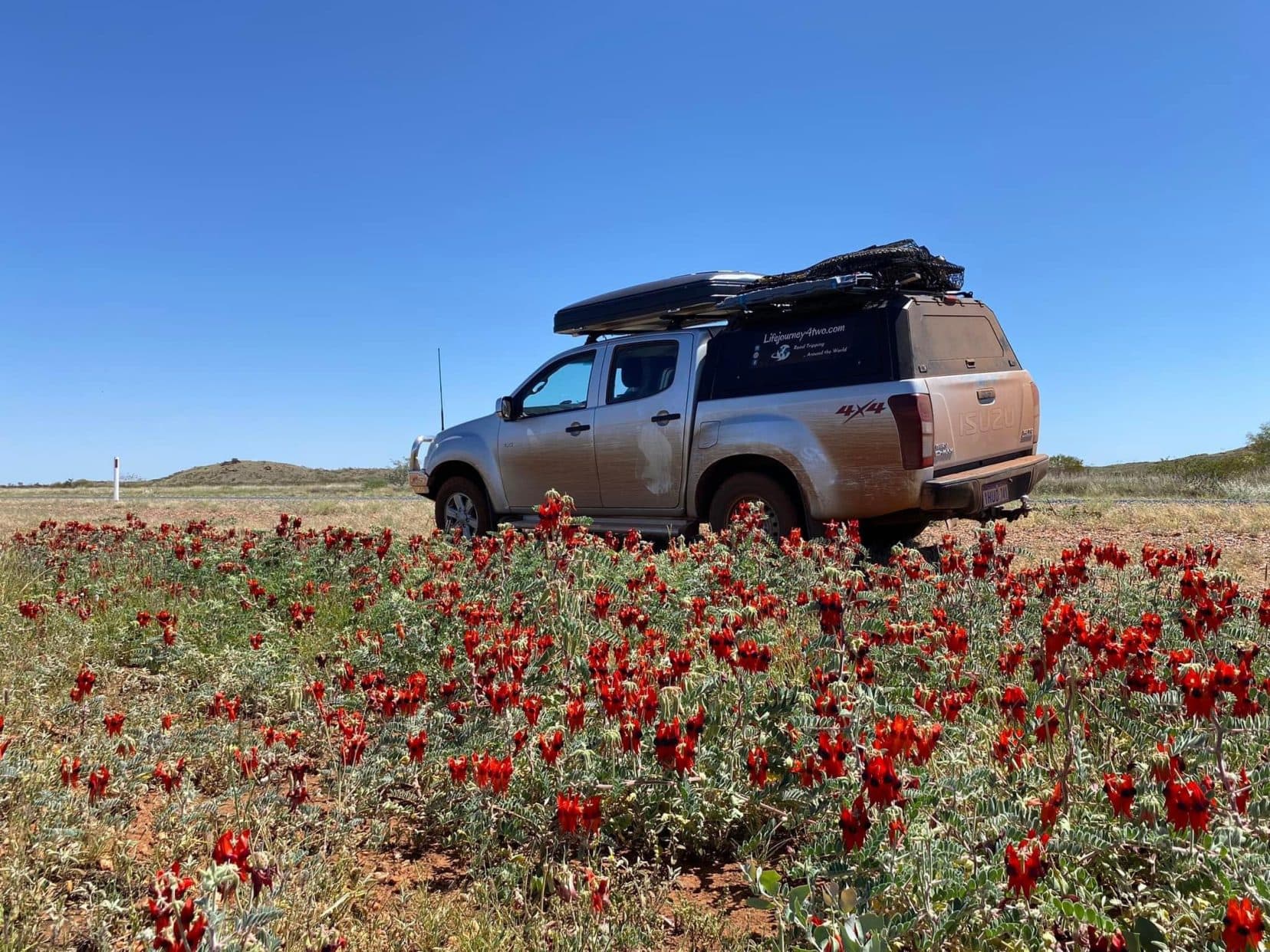
The Best Tips For Camping in Western Australia … That’s a Wrap
Ready to Explore WA’s Great Outdoors?
Western Australia has so much to offer campers, from pristine beaches to rugged outback adventures.
Now that you’re armed with our top camping tips and spots, it’s time to start planning your next trip. Whether you’re after wildflower displays, coastal escapes, or outback adventures, WA has it all.
For more travel inspiration and detailed guides, visit our Western Australia Page and start planning your adventure!
Get Your FREE Camping Checklist & Gear Breakdown
Before you head off, don’t forget to download our free printable Camping Equipment Checklist.
Whether new to camping or a seasoned traveller, this checklist will help you stay organised and ensure you’ve covered everything.
Plus, when you download the checklist, you’ll also receive a detailed cost breakdown of all the essential camping gear we rely on for our trips, from tents to power setups.
It’s a practical guide to help you budget for your adventure and choose the best equipment for your needs.
Pin on Pinterest and save for later
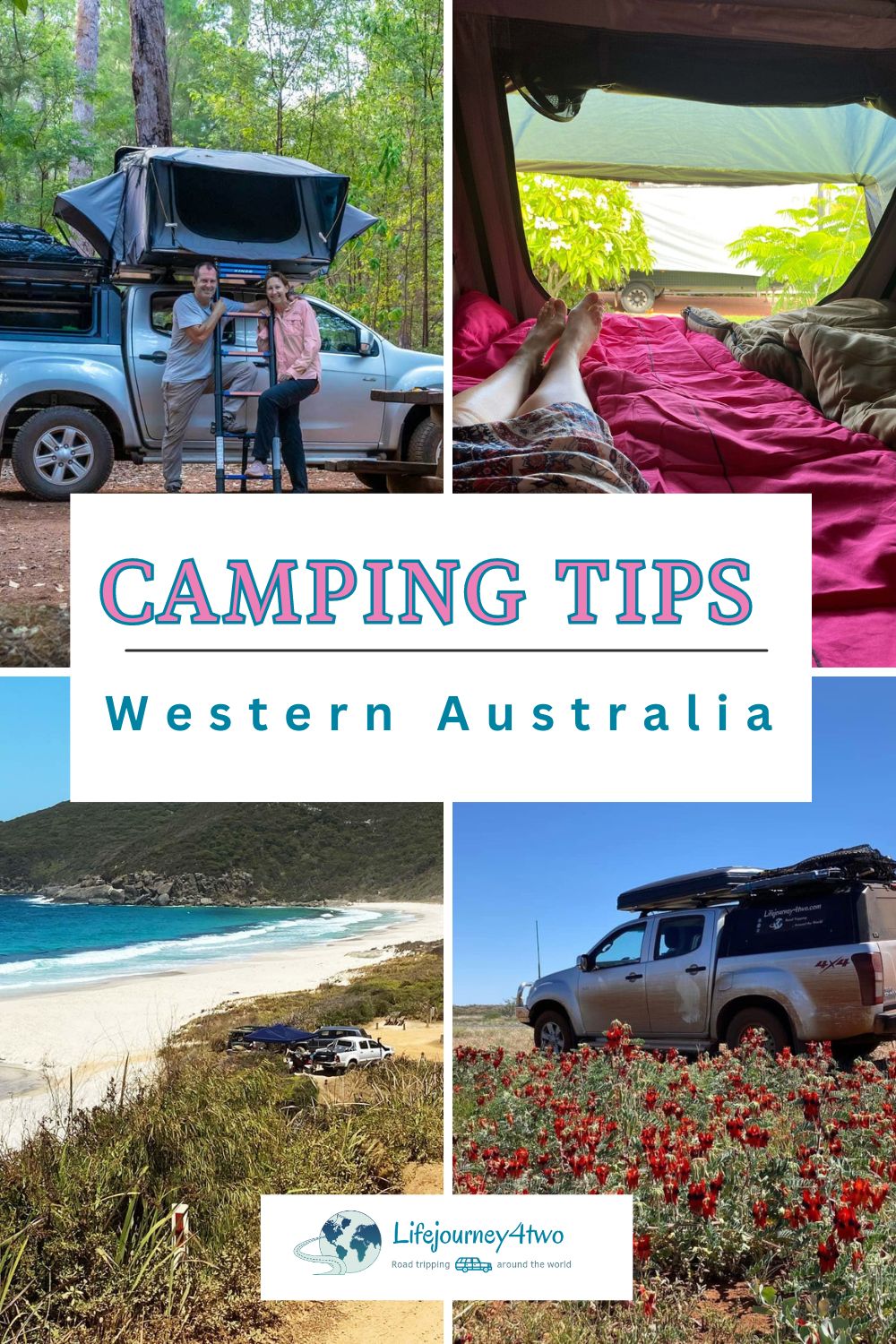

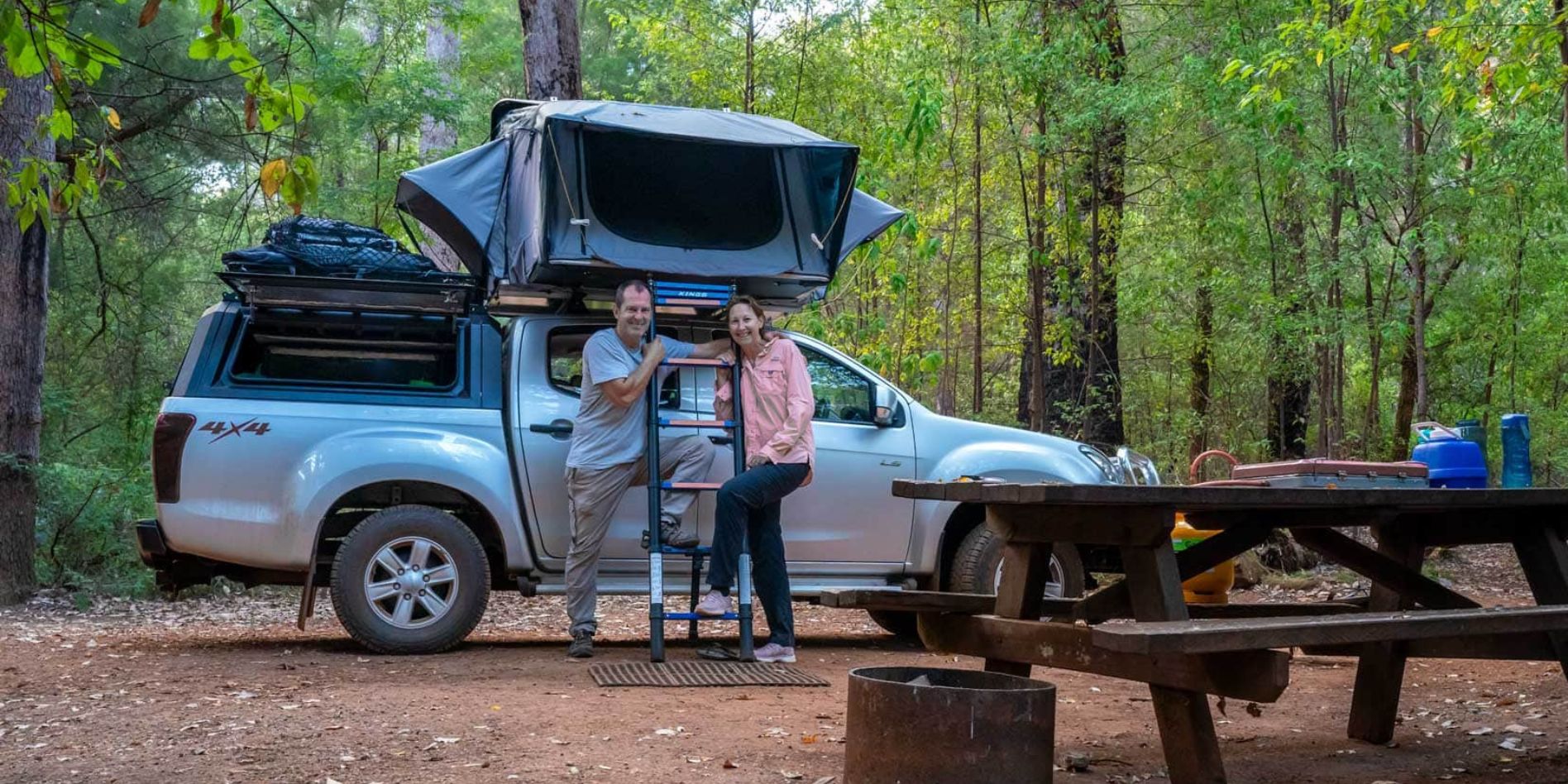
Hi Shelley and Lars,
it is always a great pleasure to receive your mail.
Wish you all the best-Alex
So pleased you enjoy our content Alex and thank you so much for your support:)